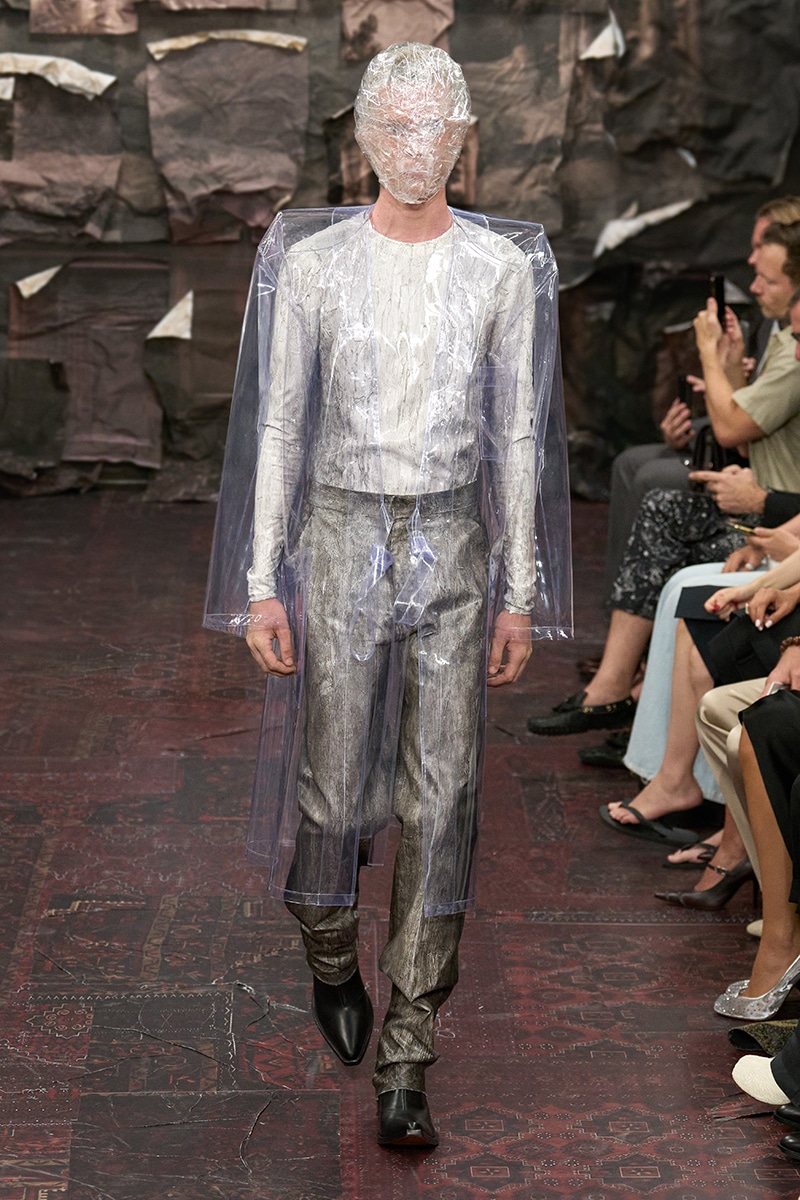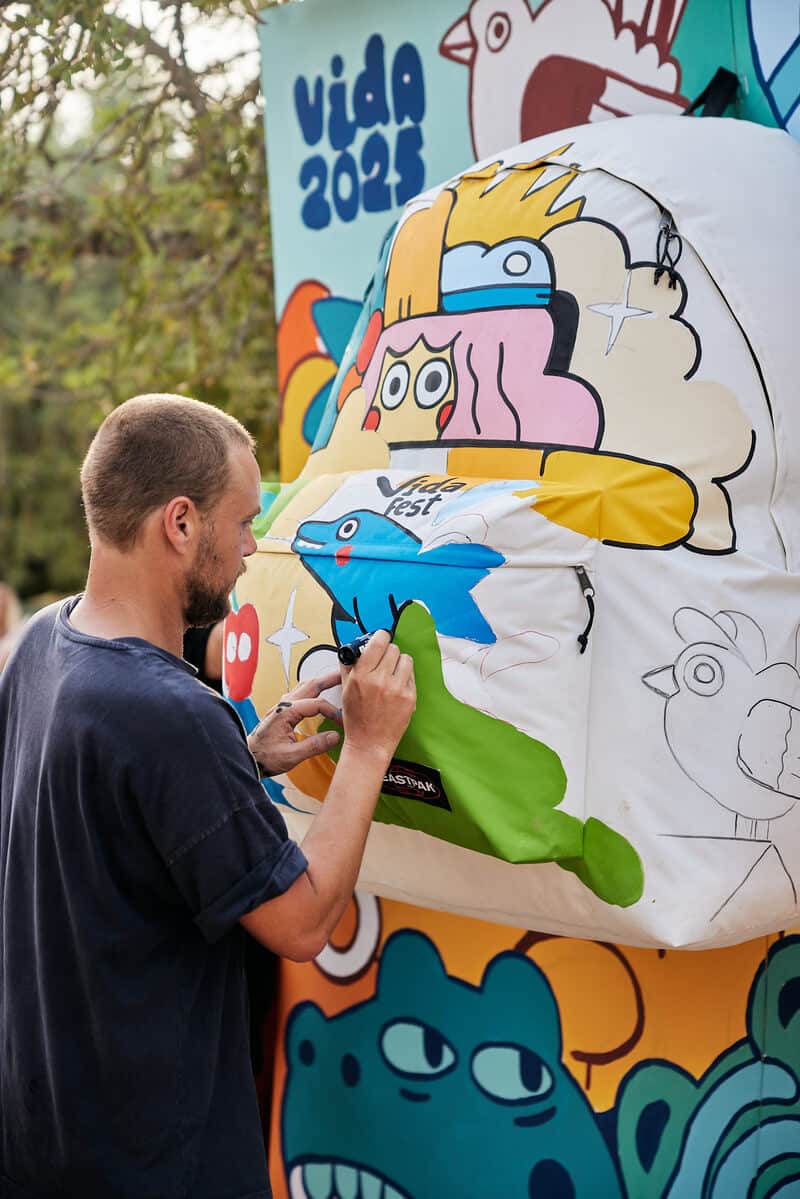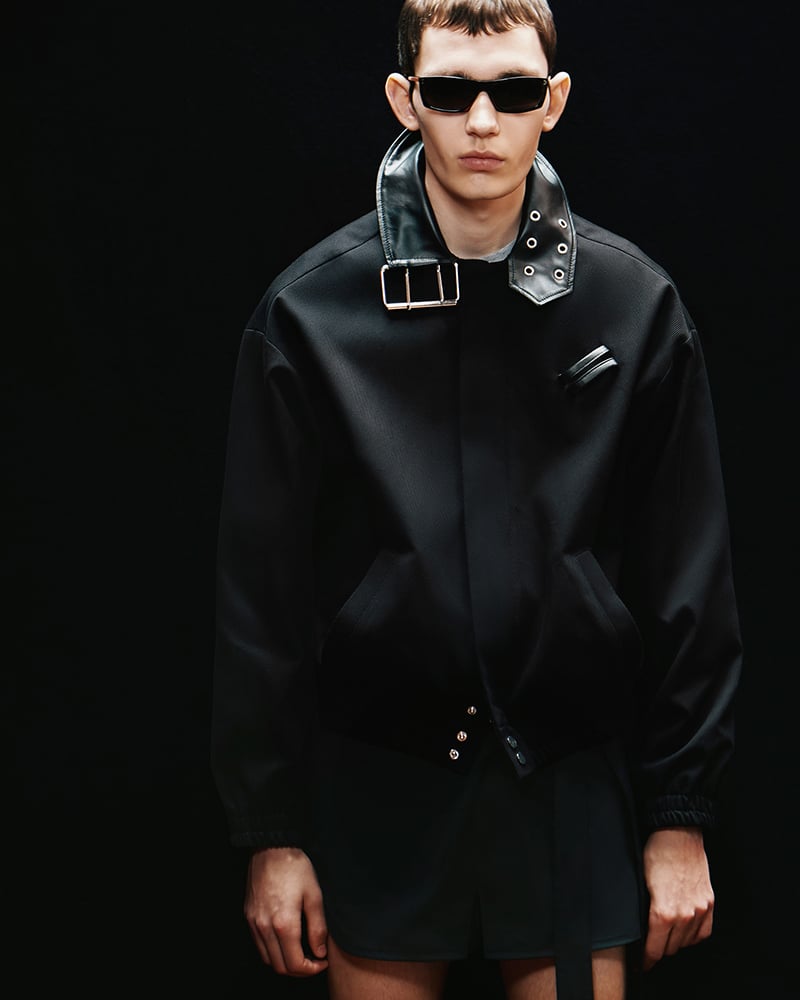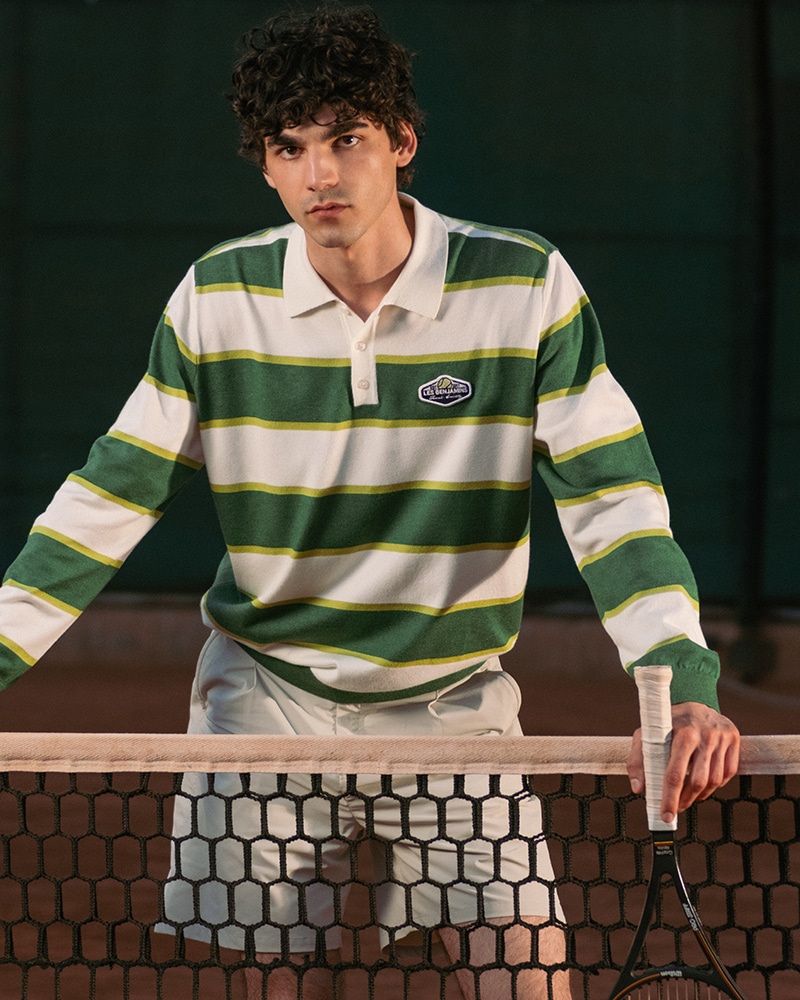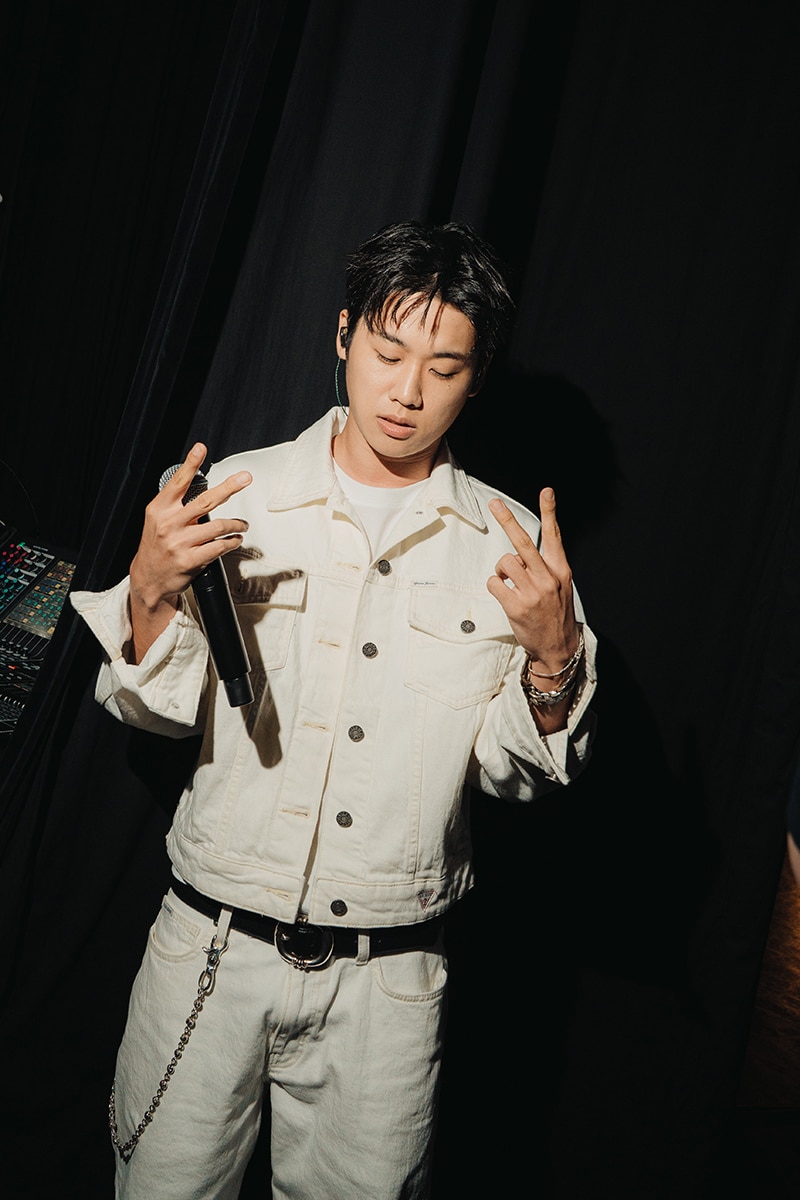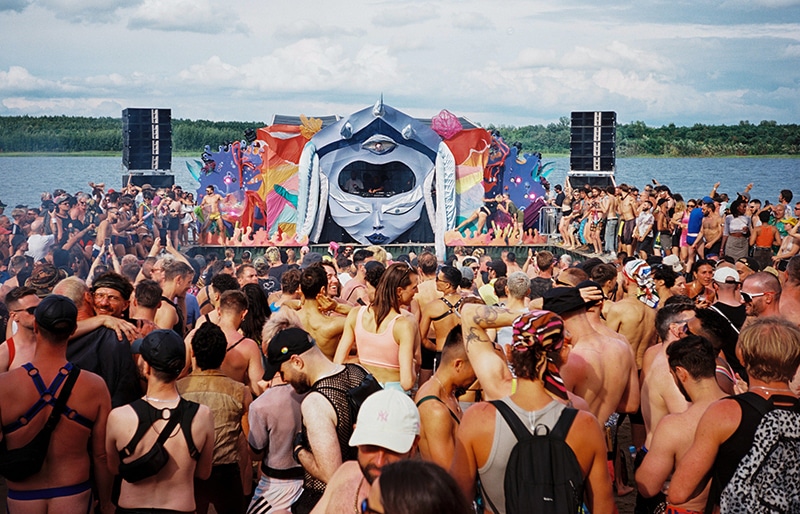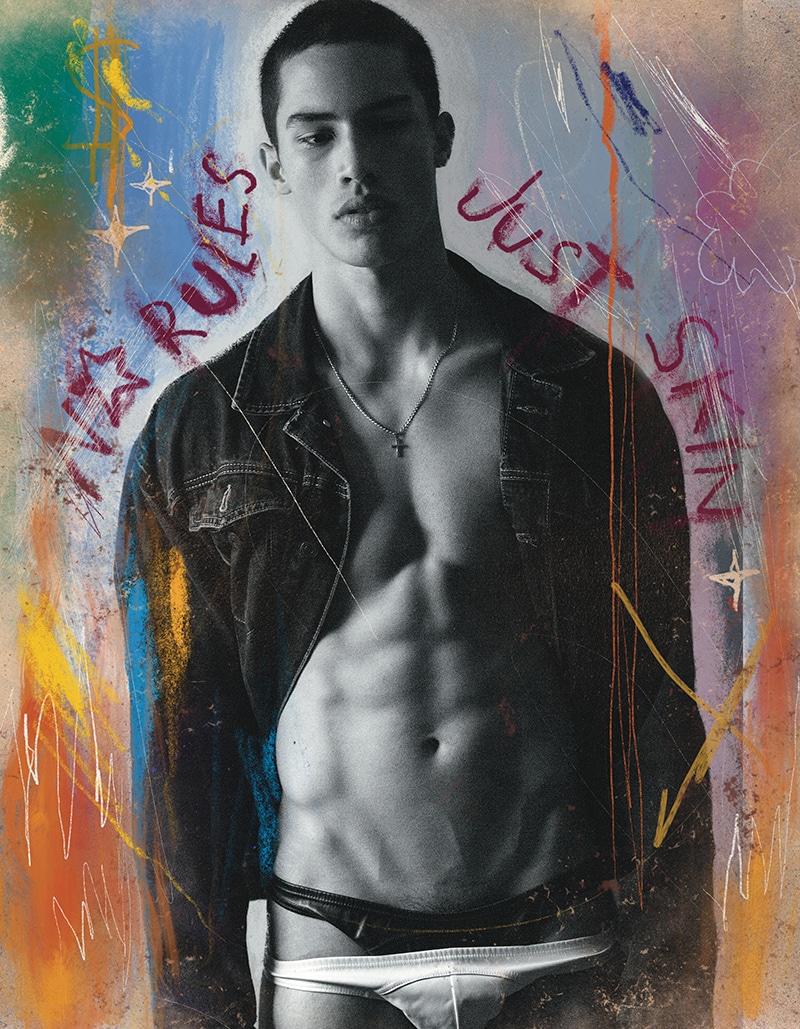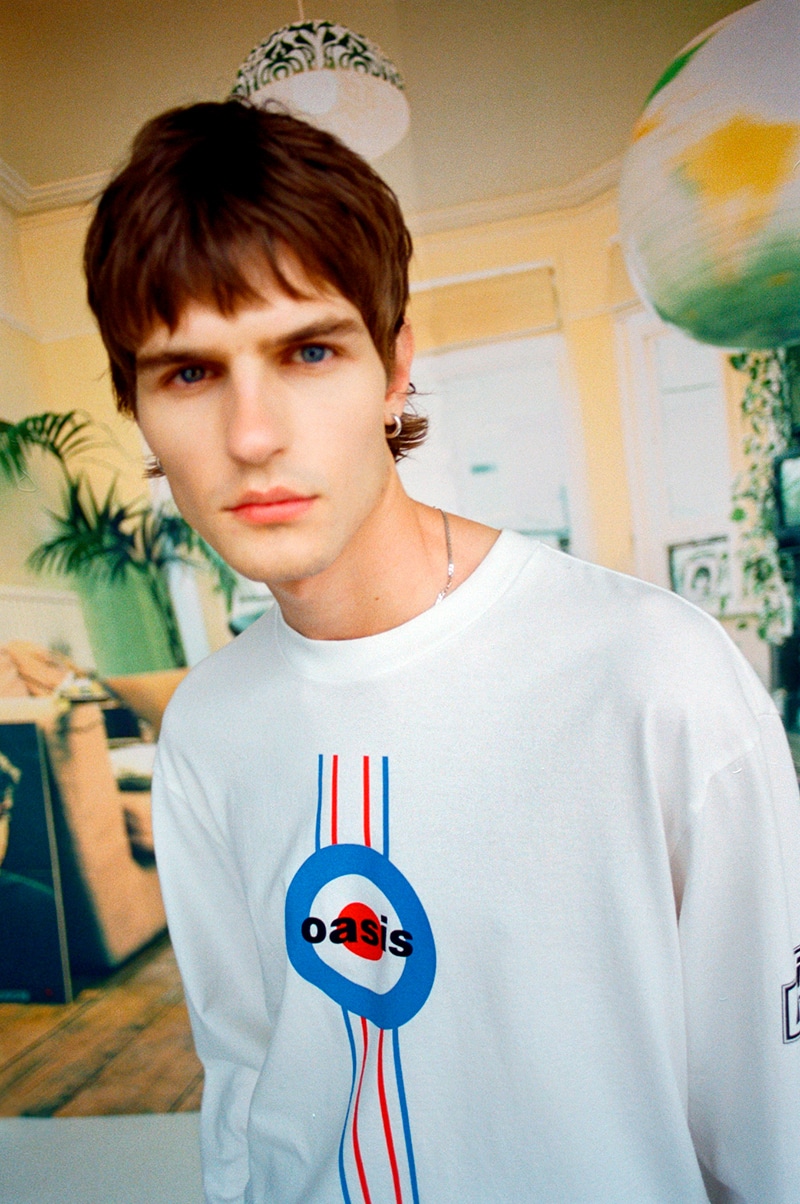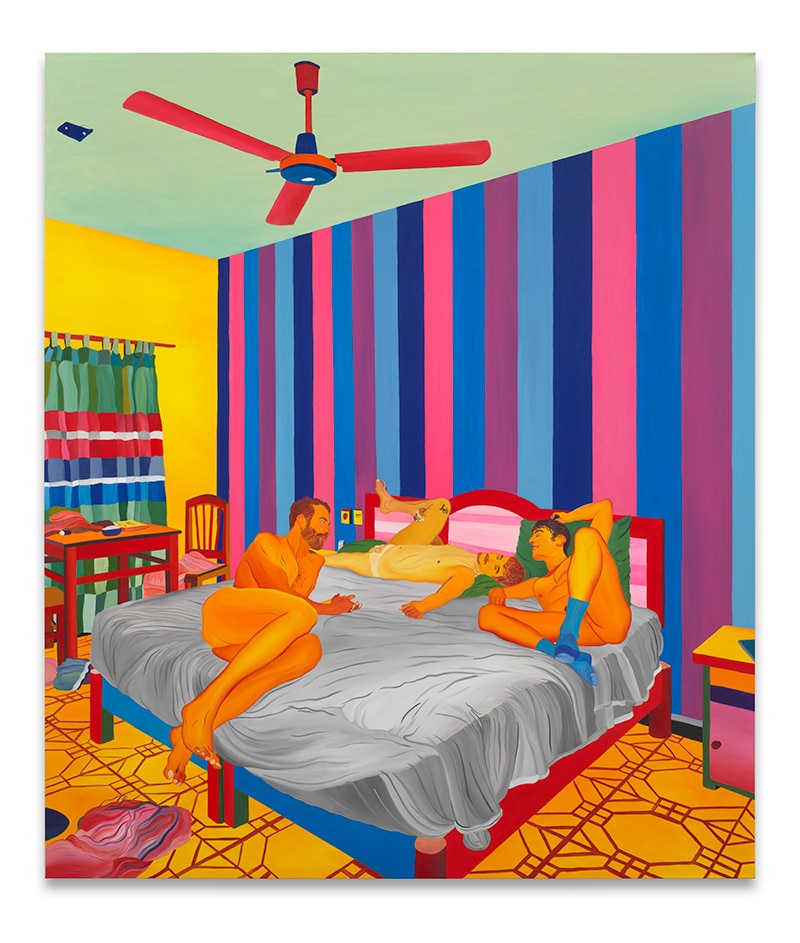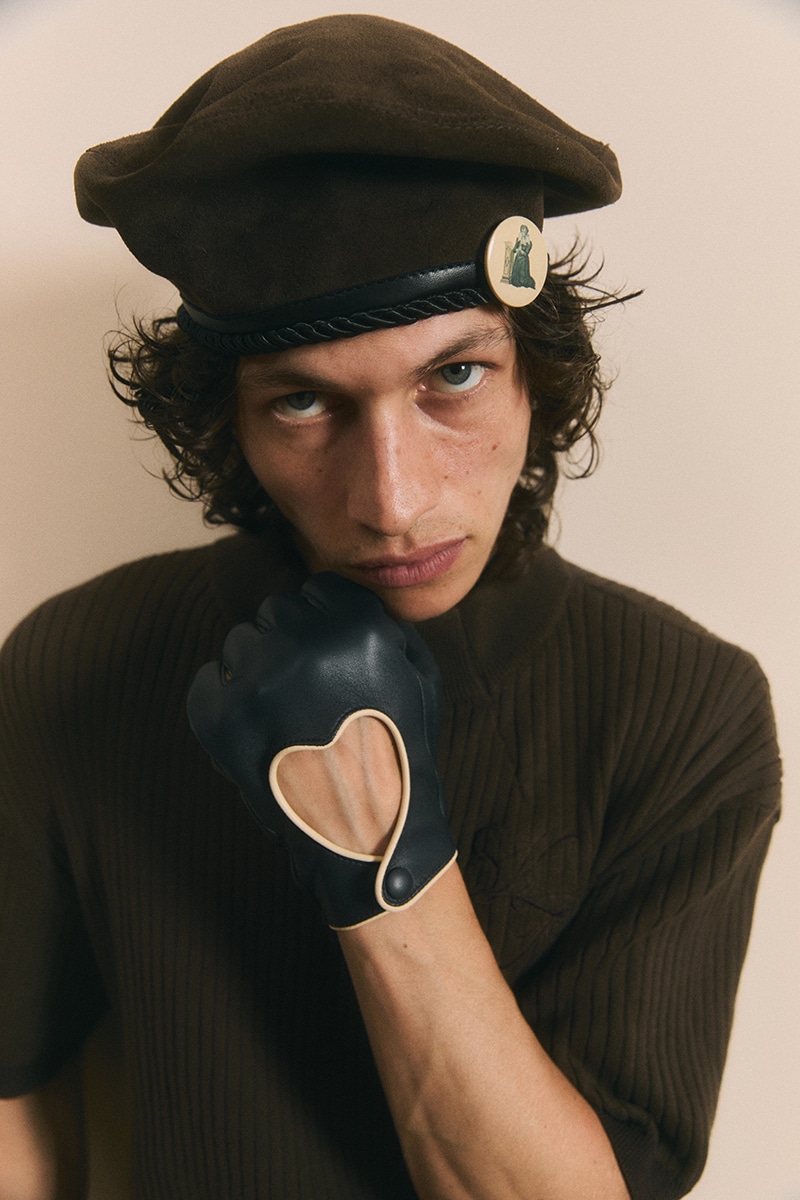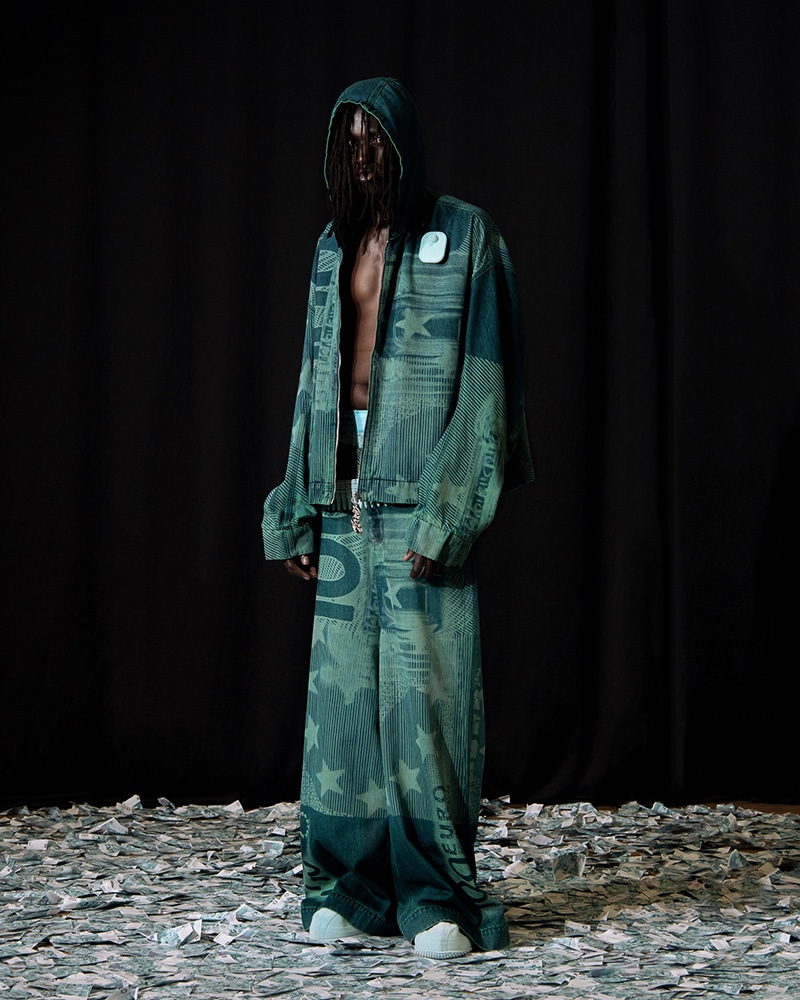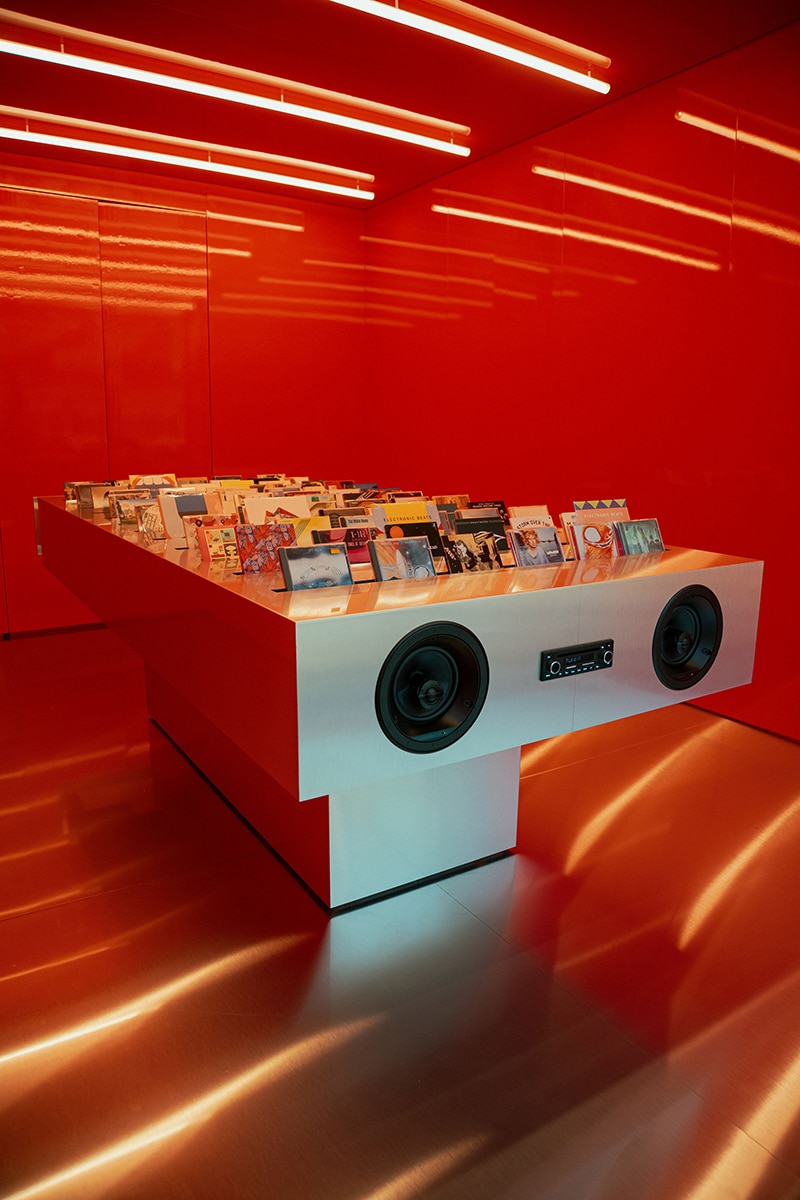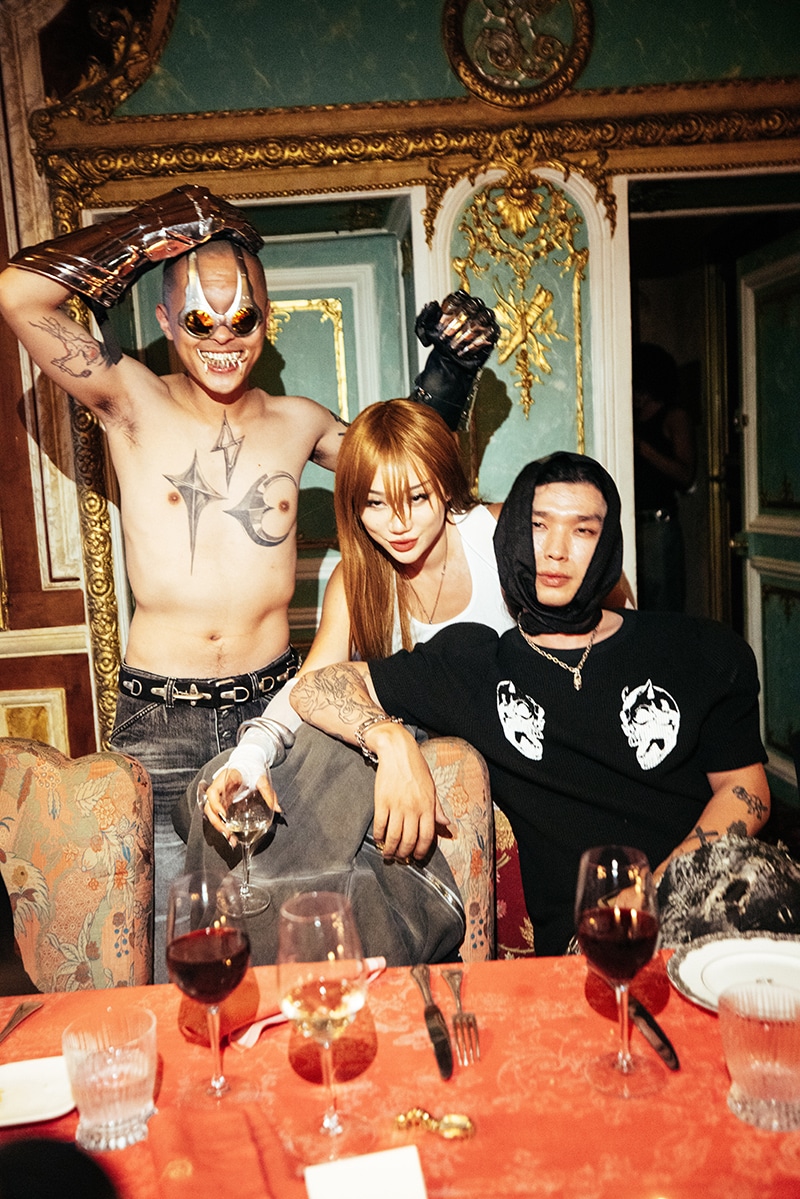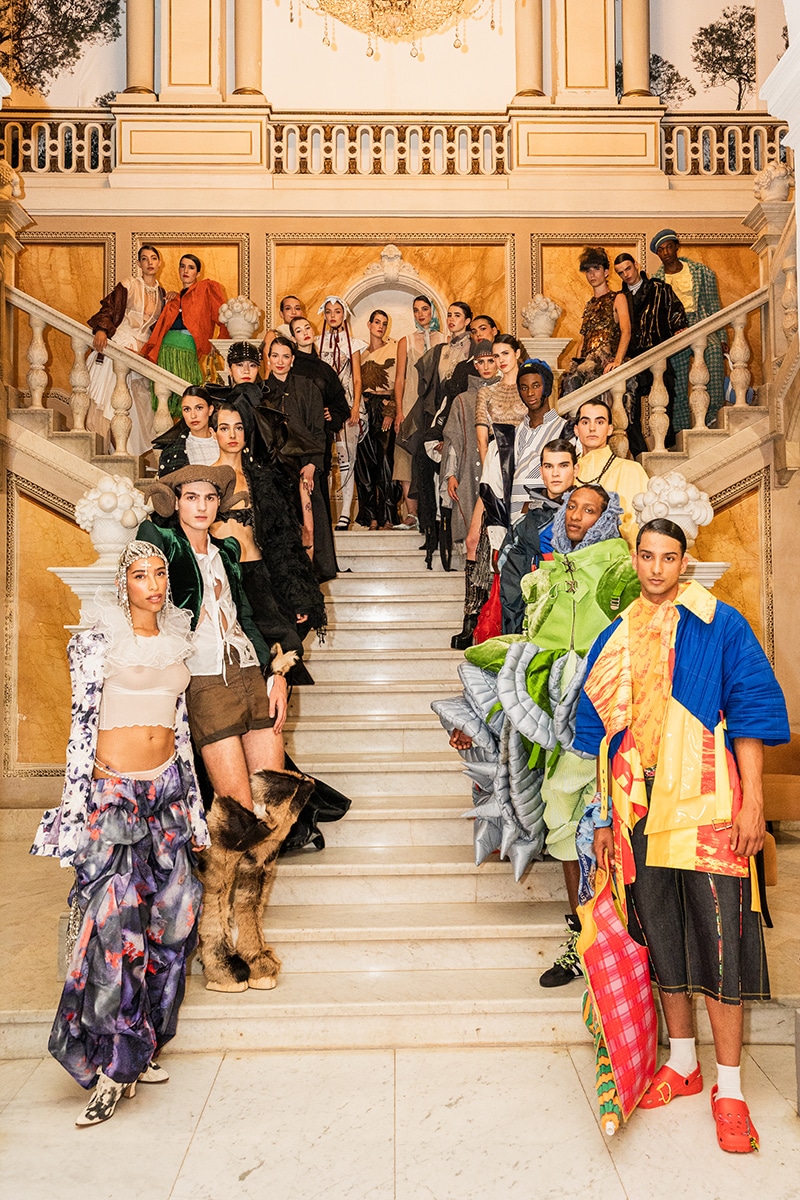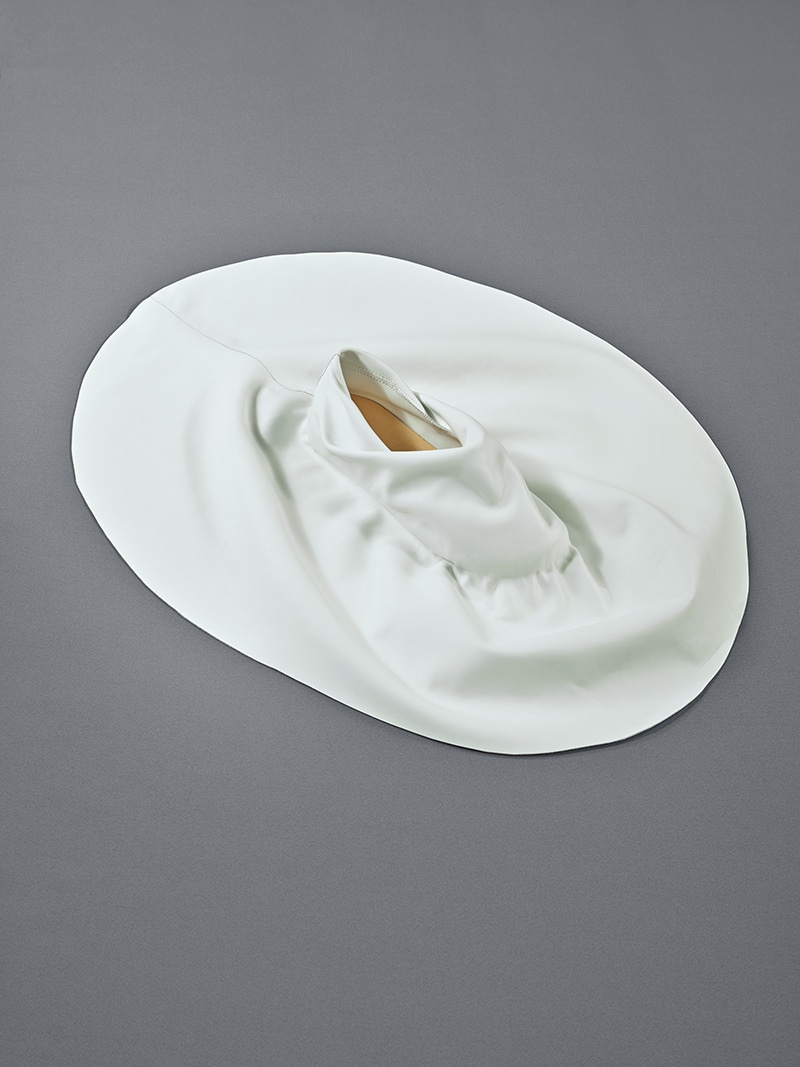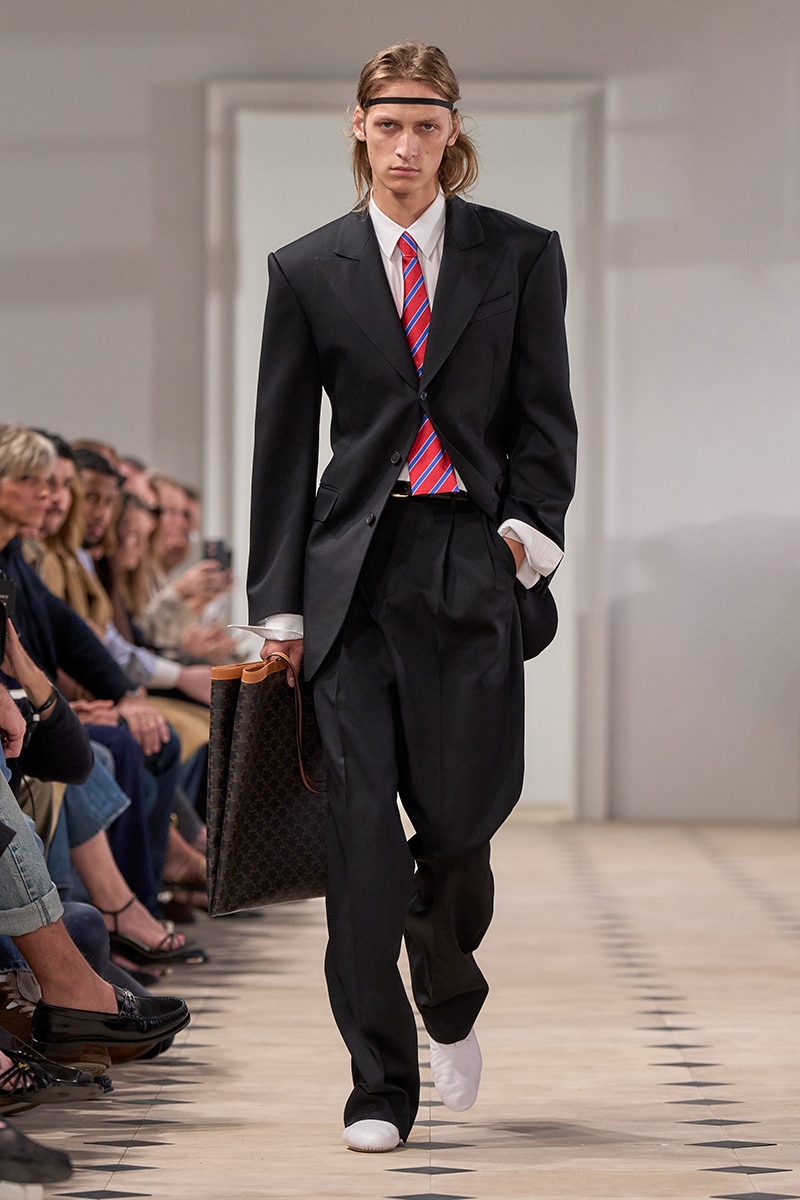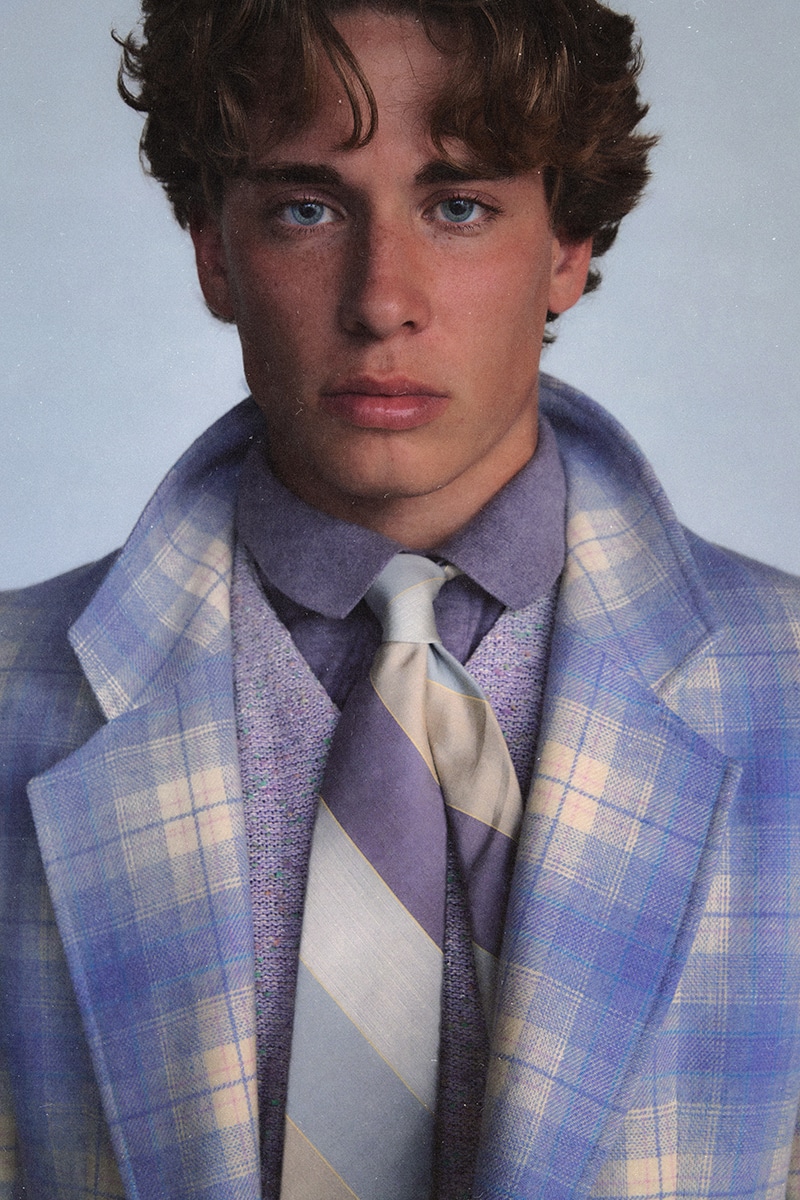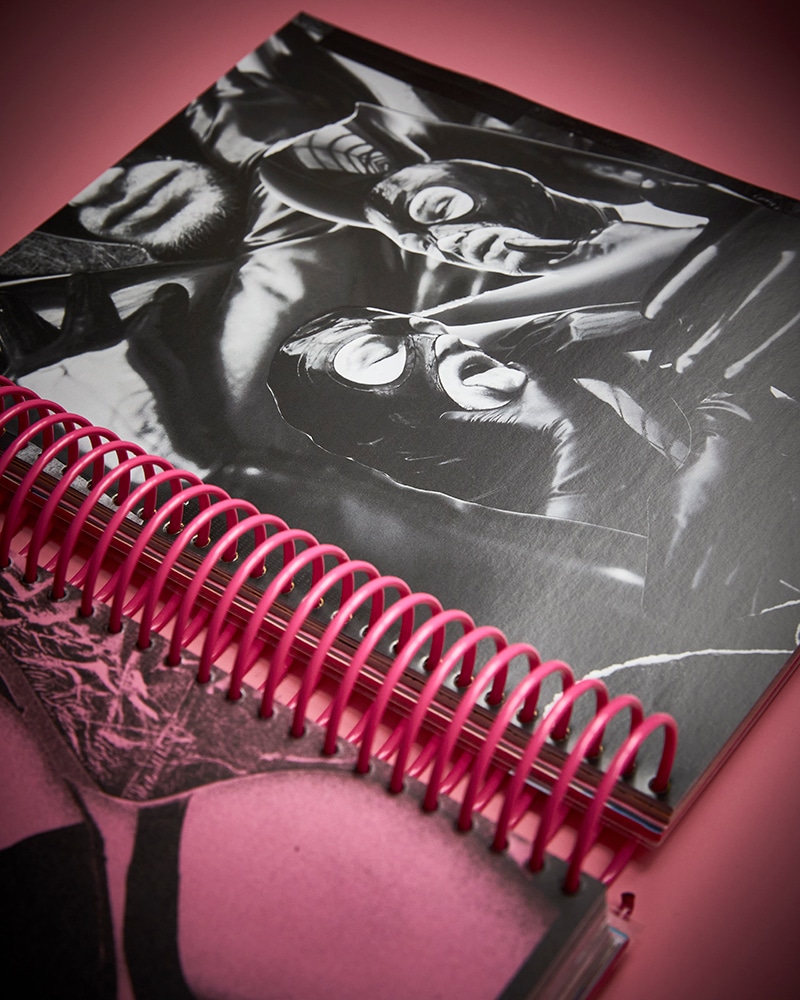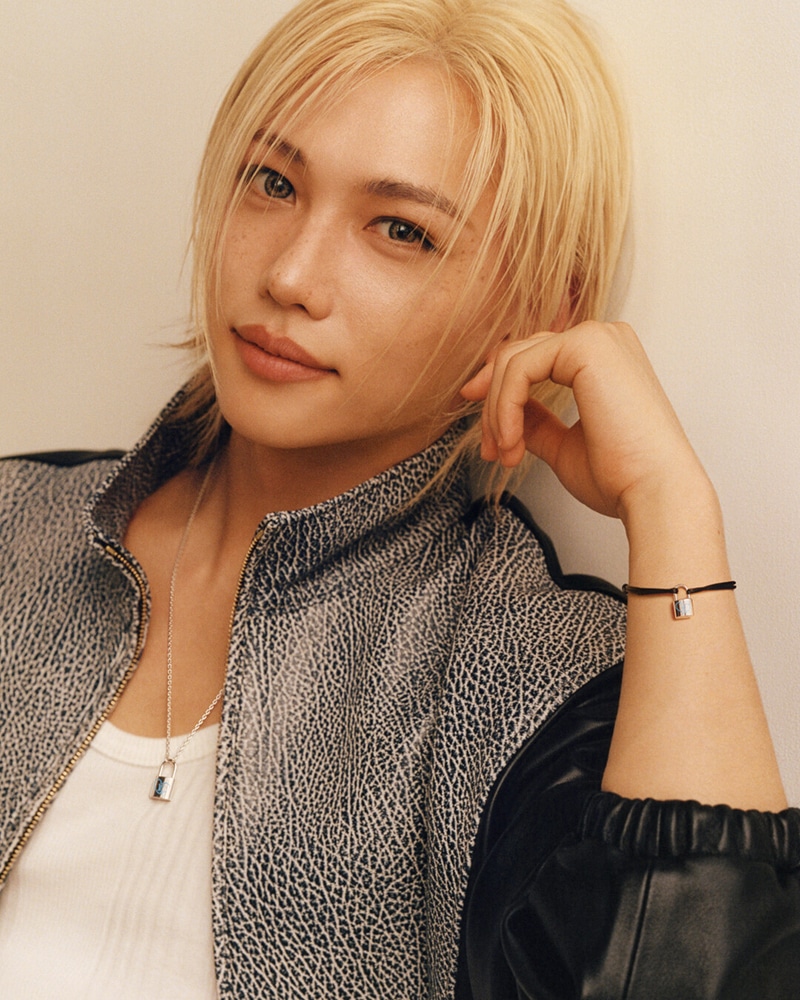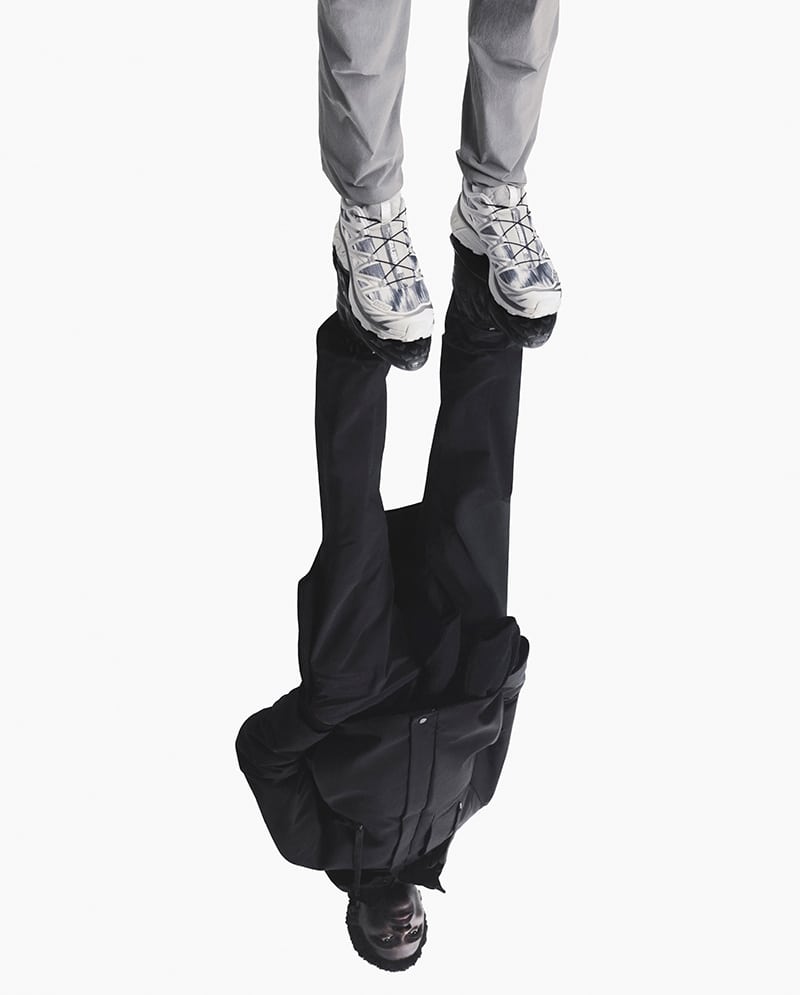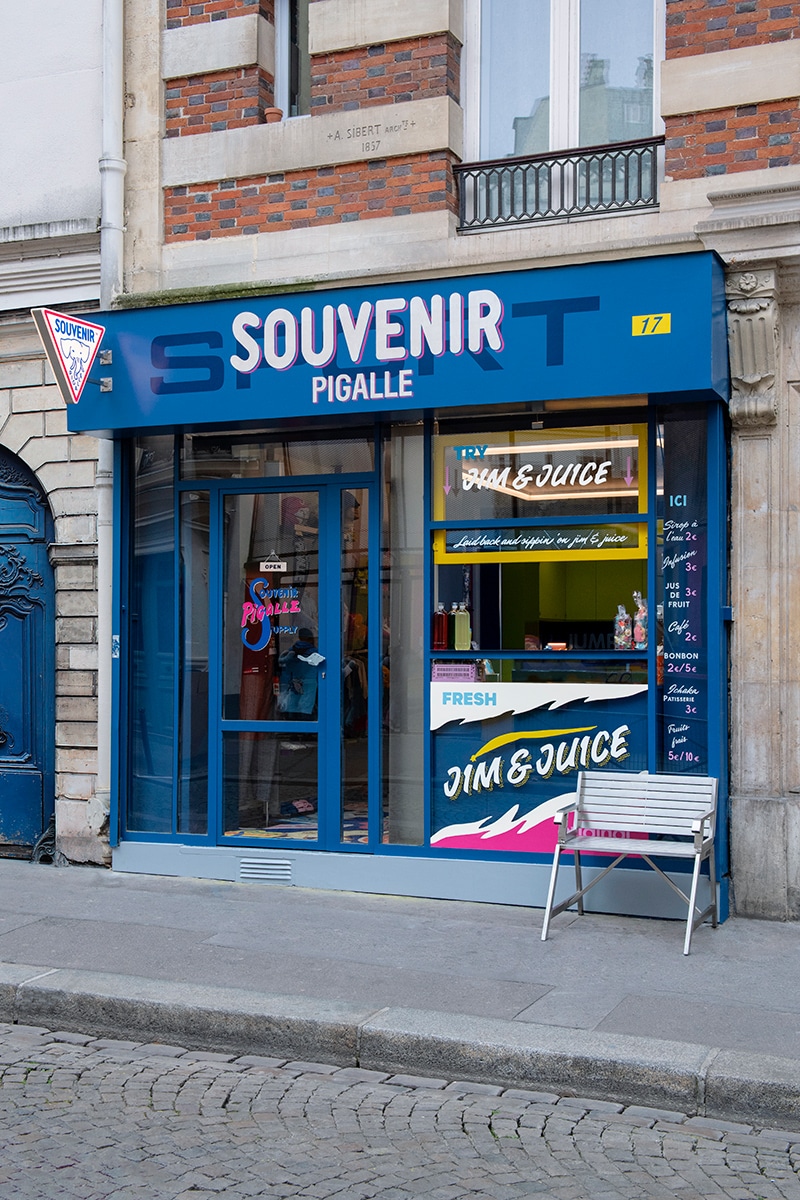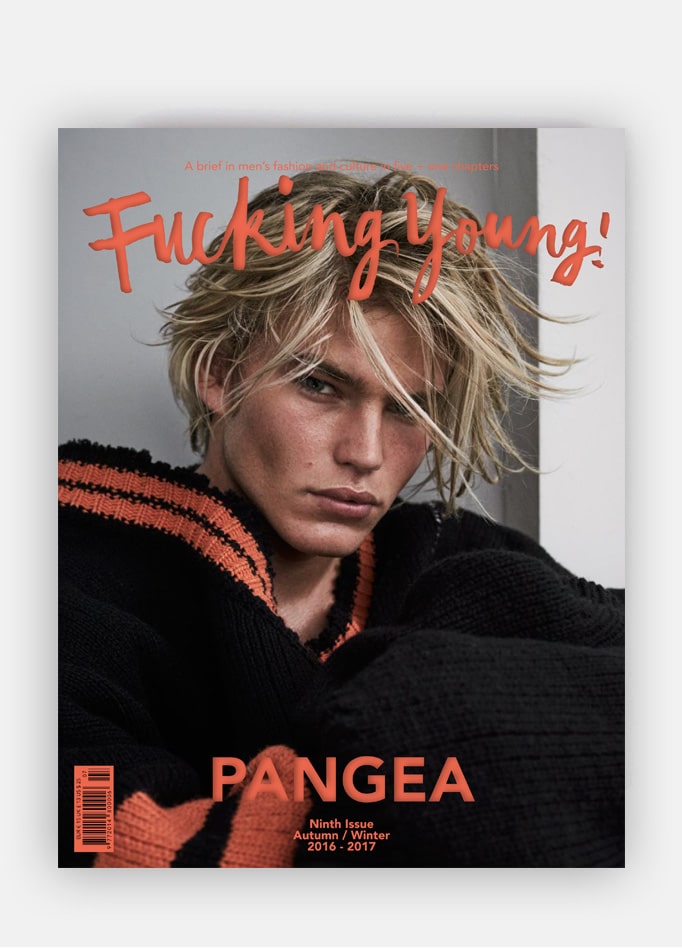Edward Crutchley Spring/Summer 2018
by Ashlee Severin

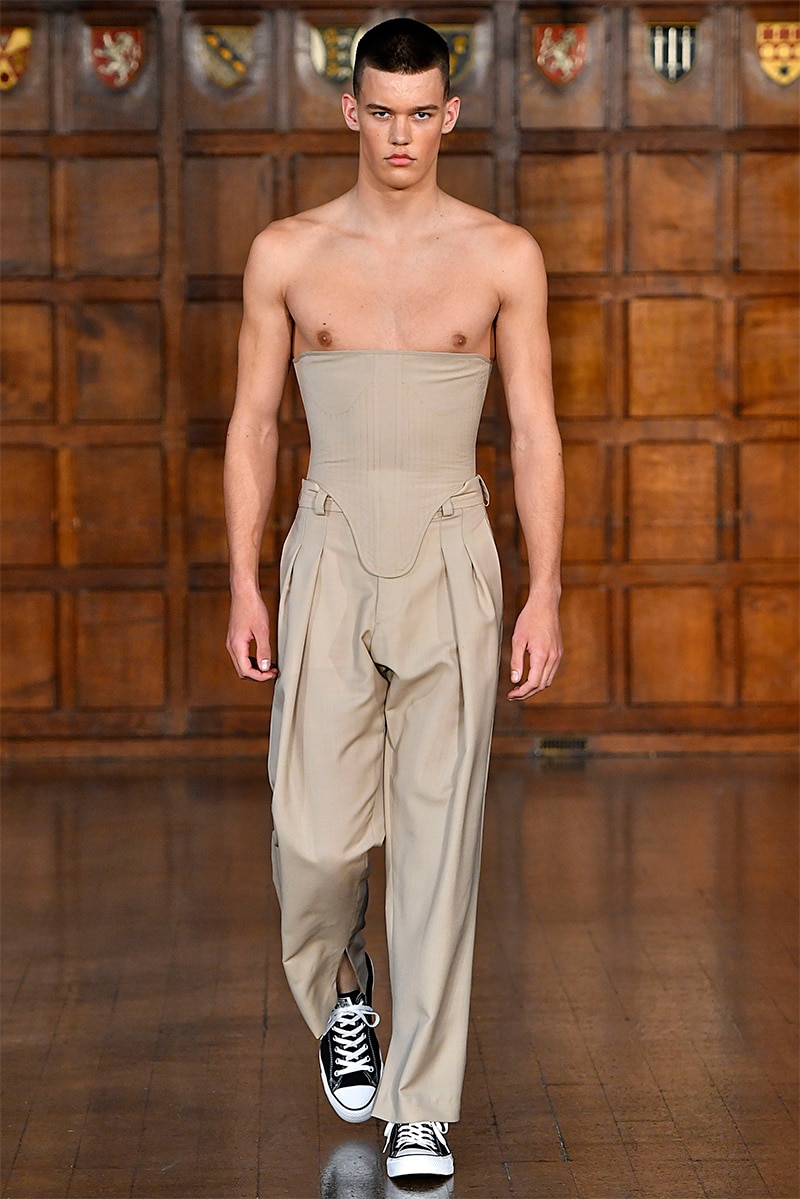
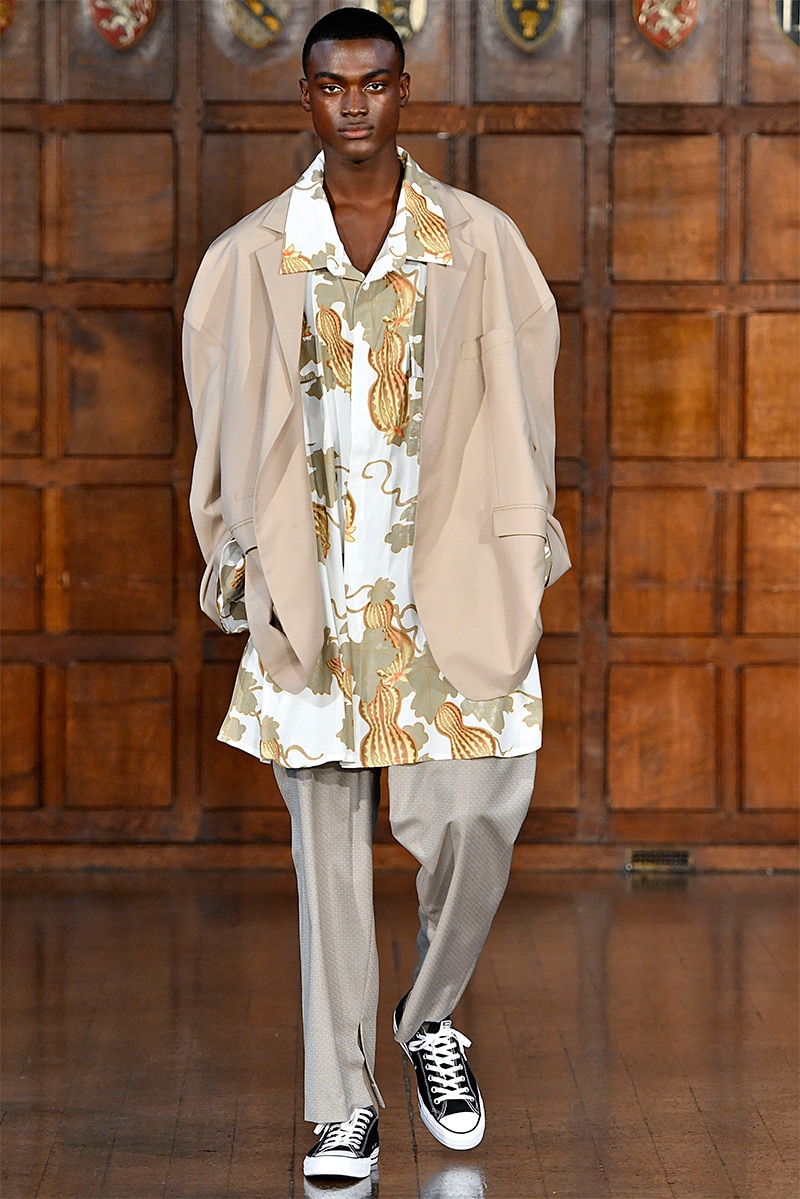
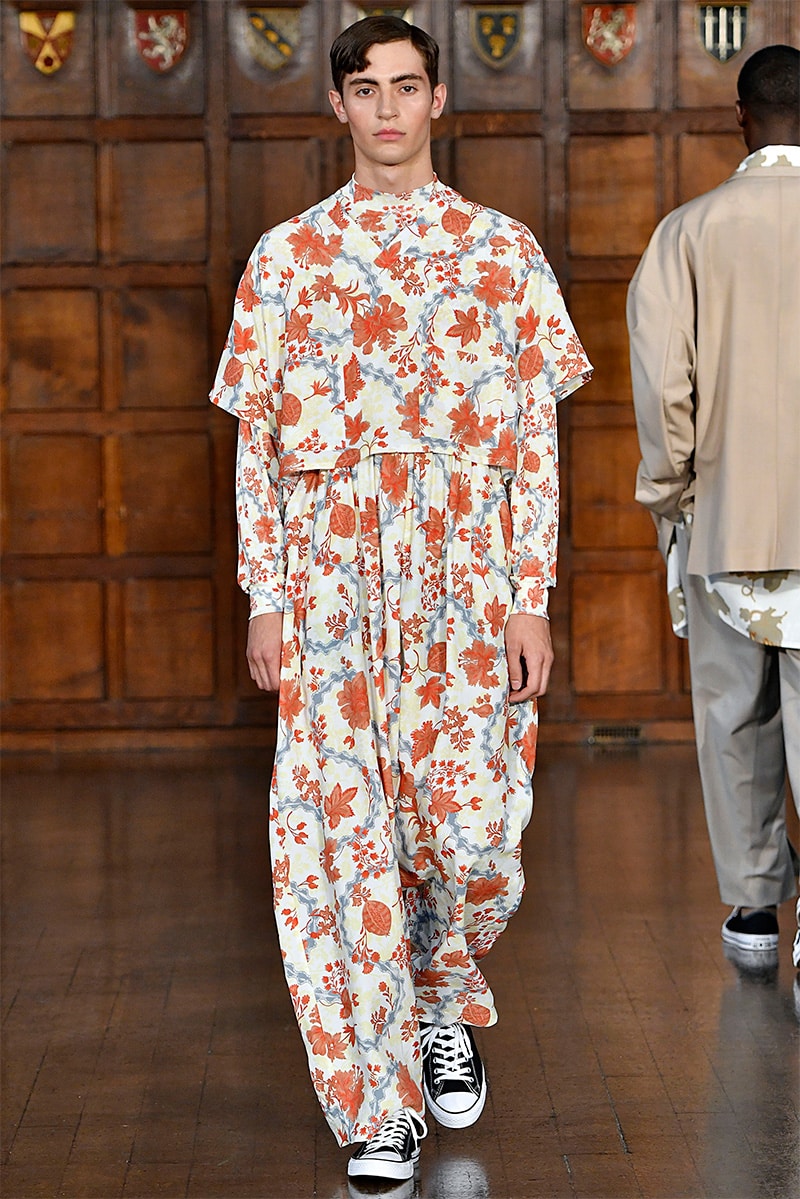
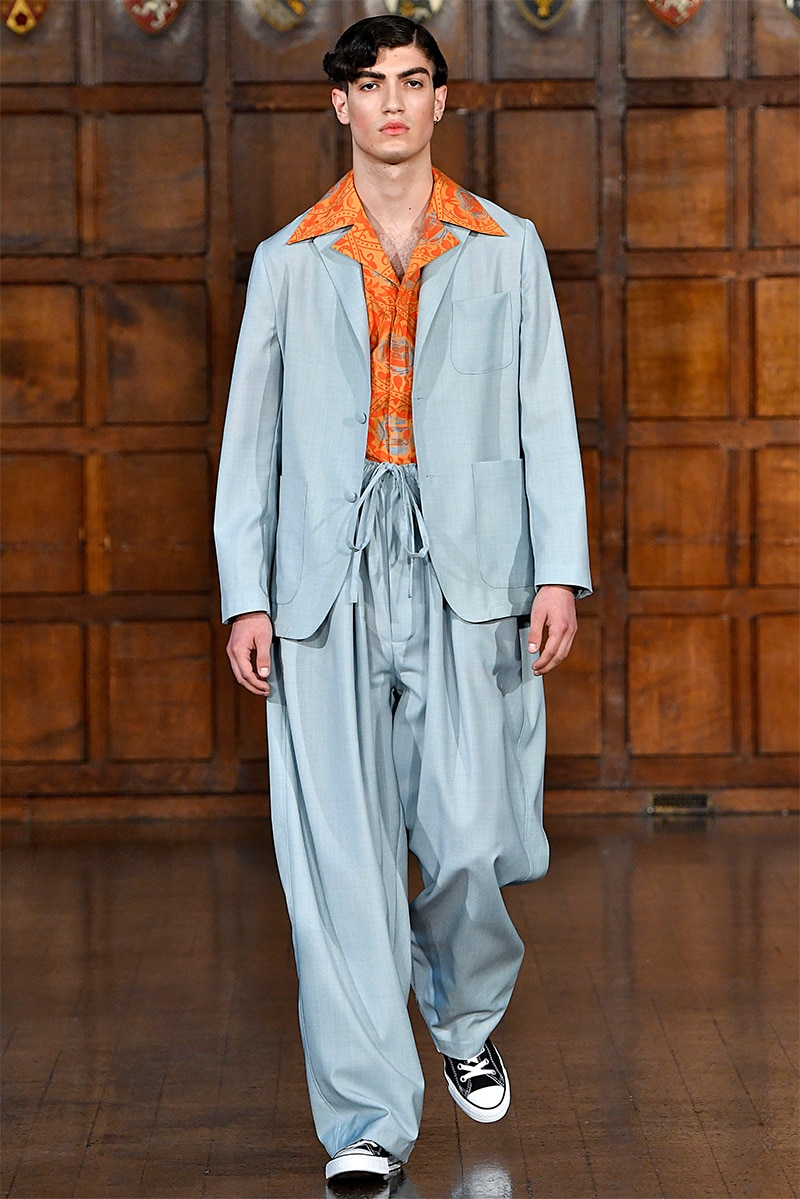
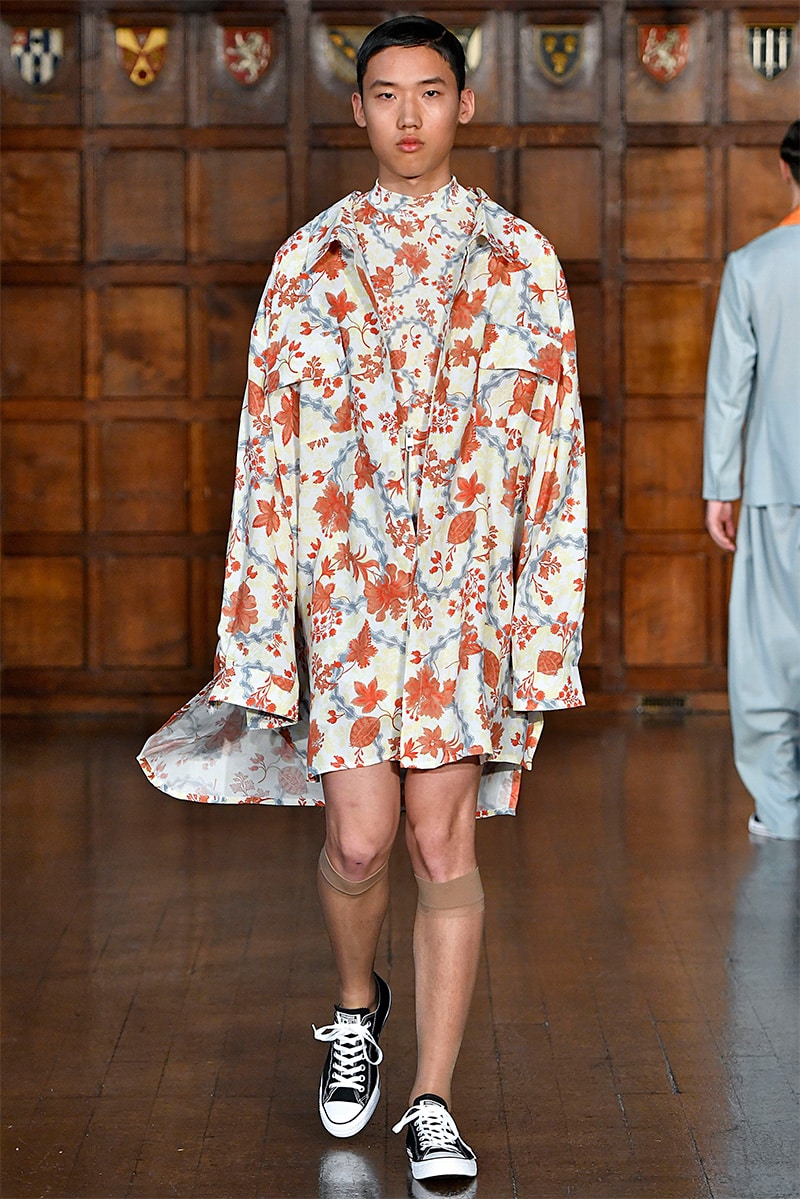
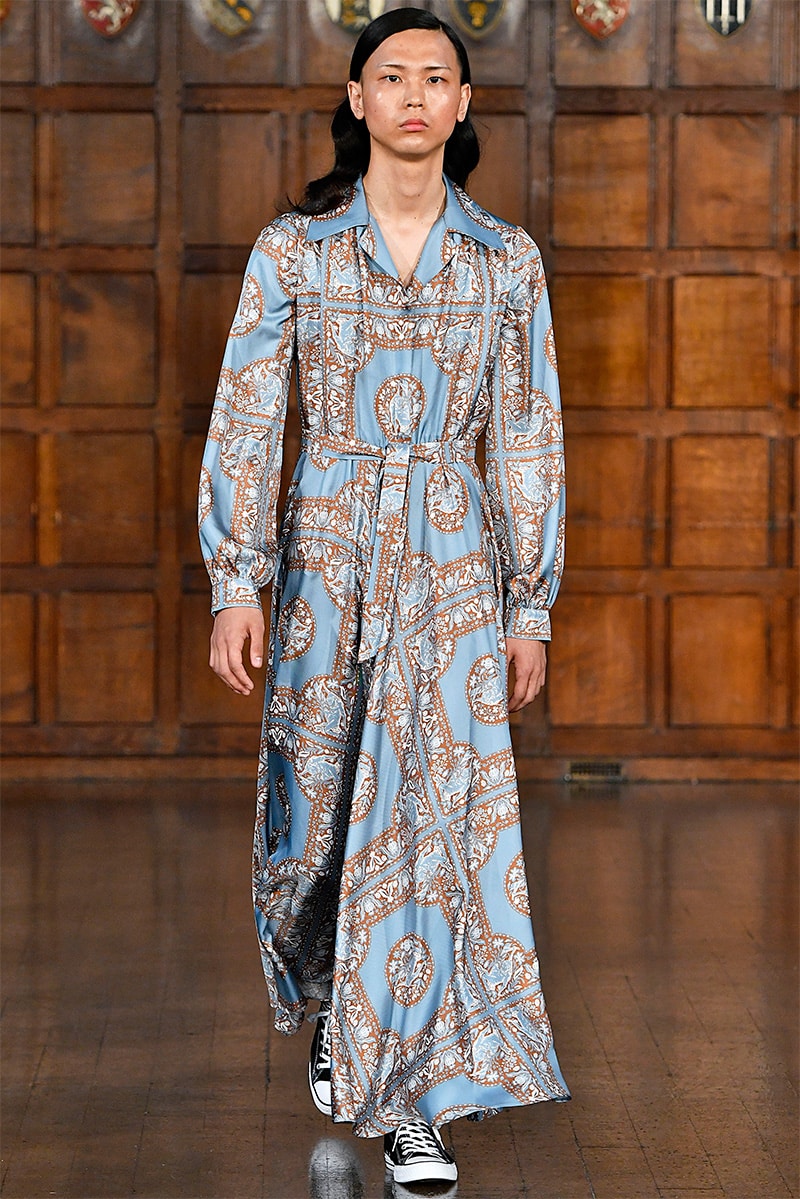
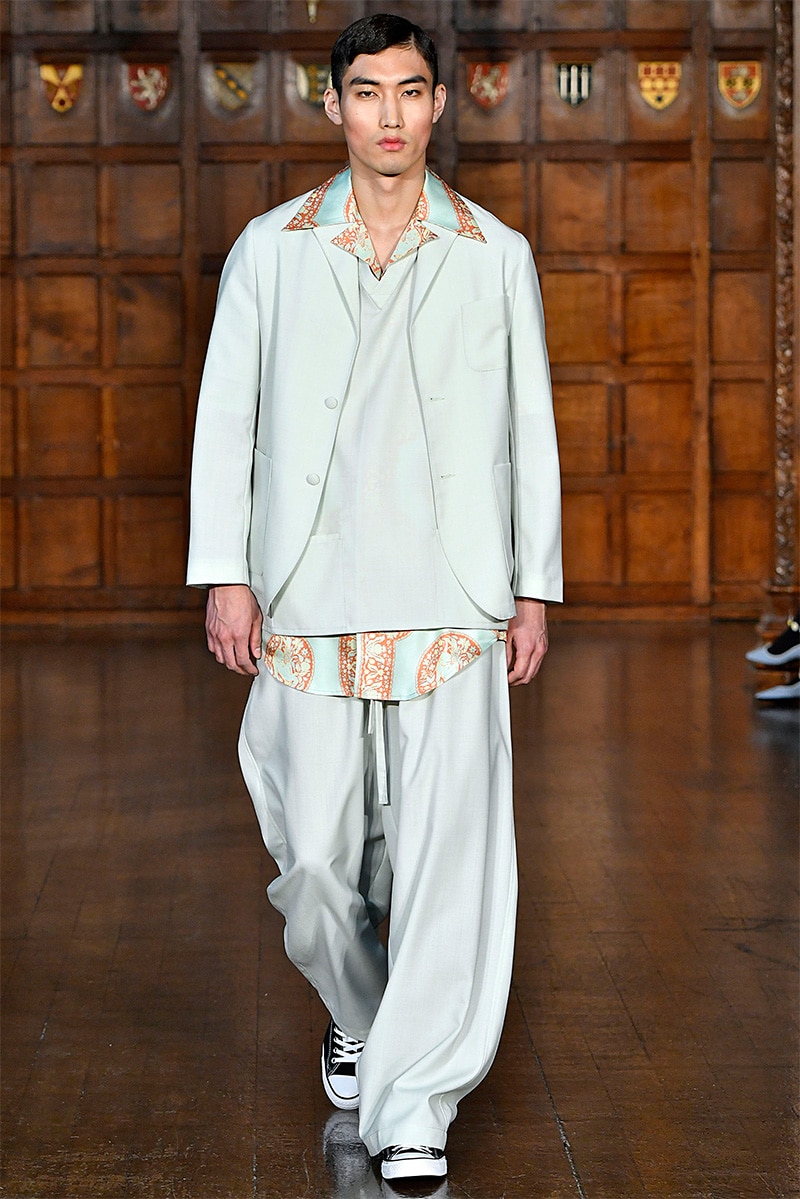
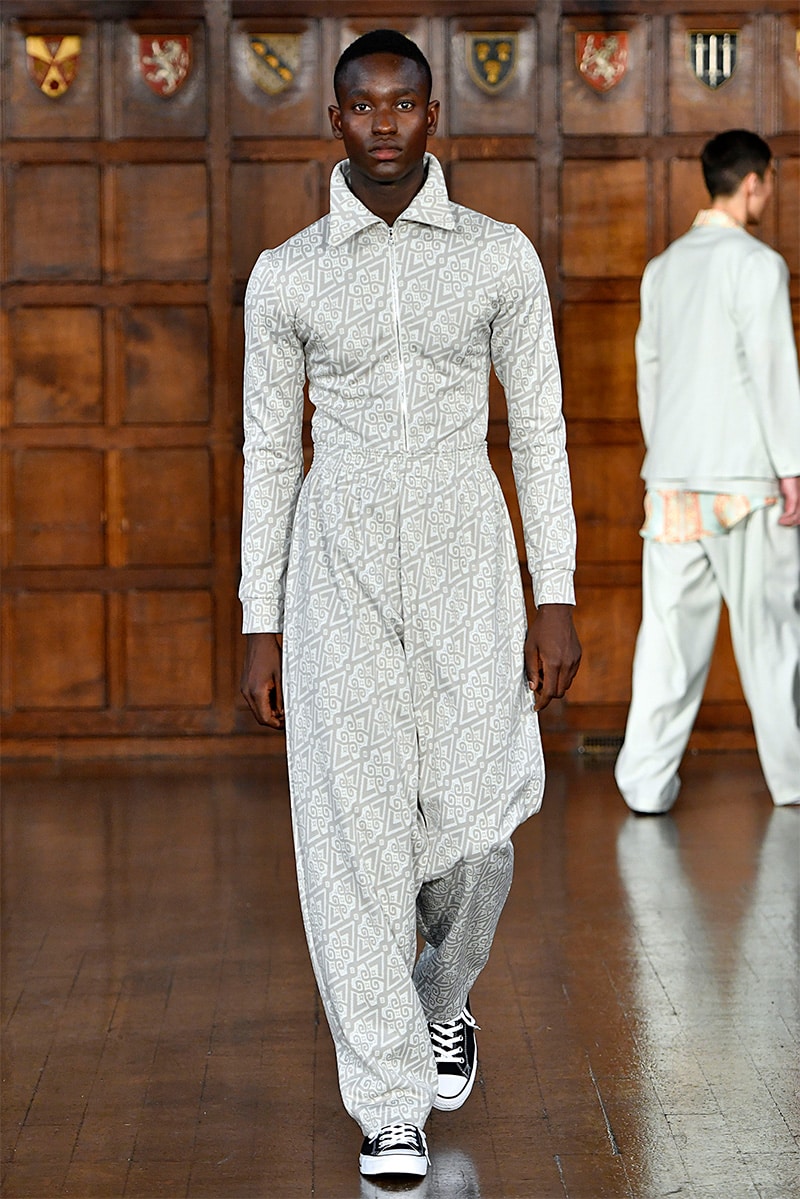
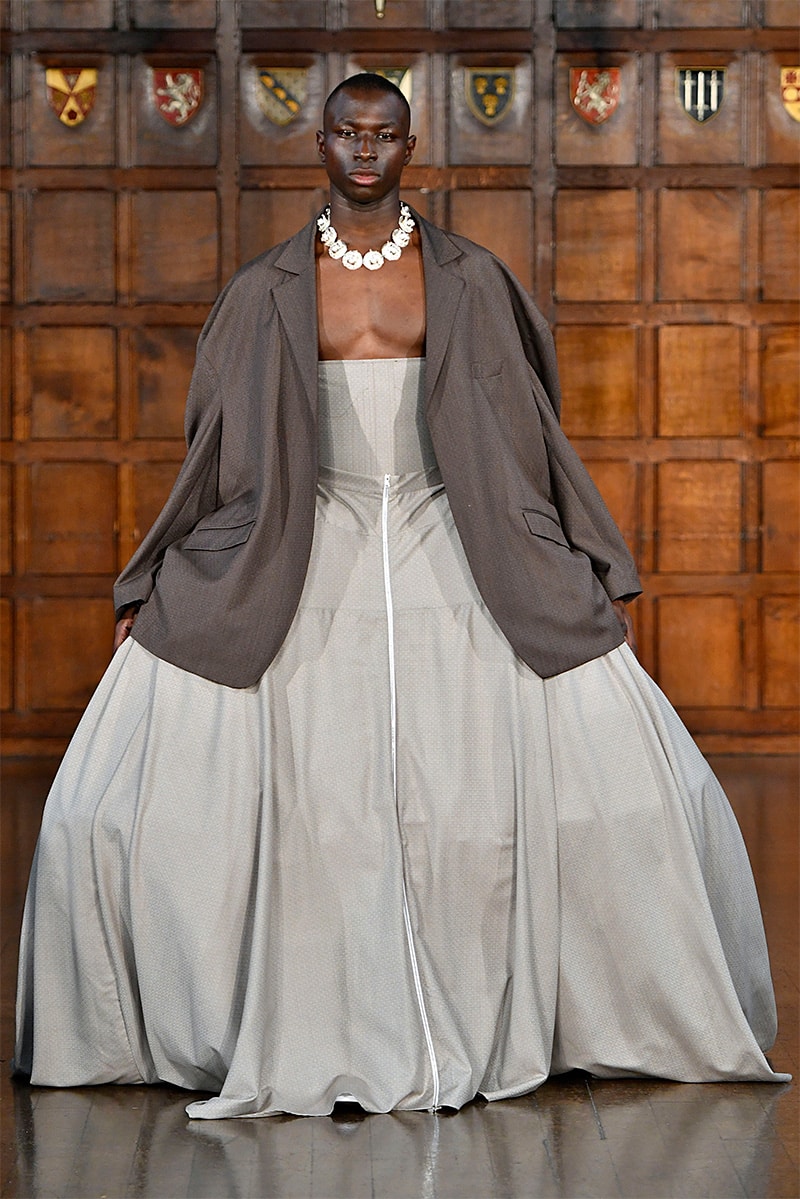
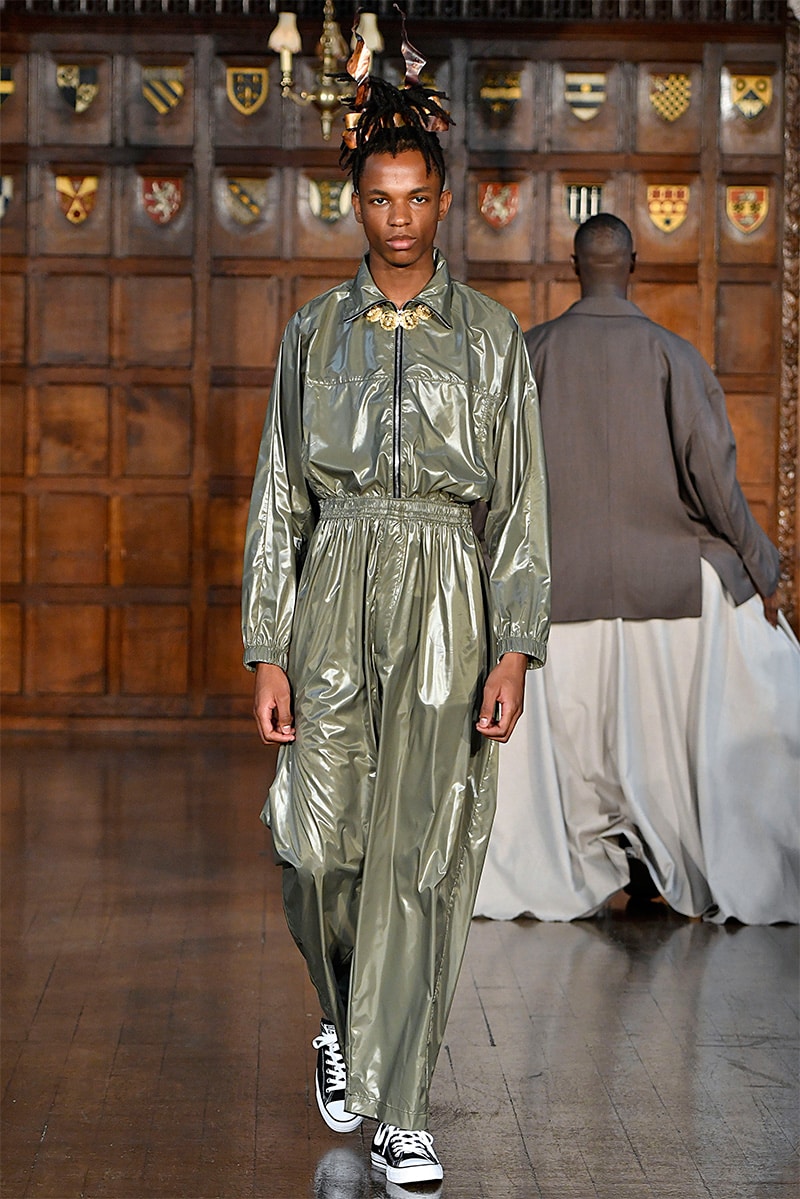
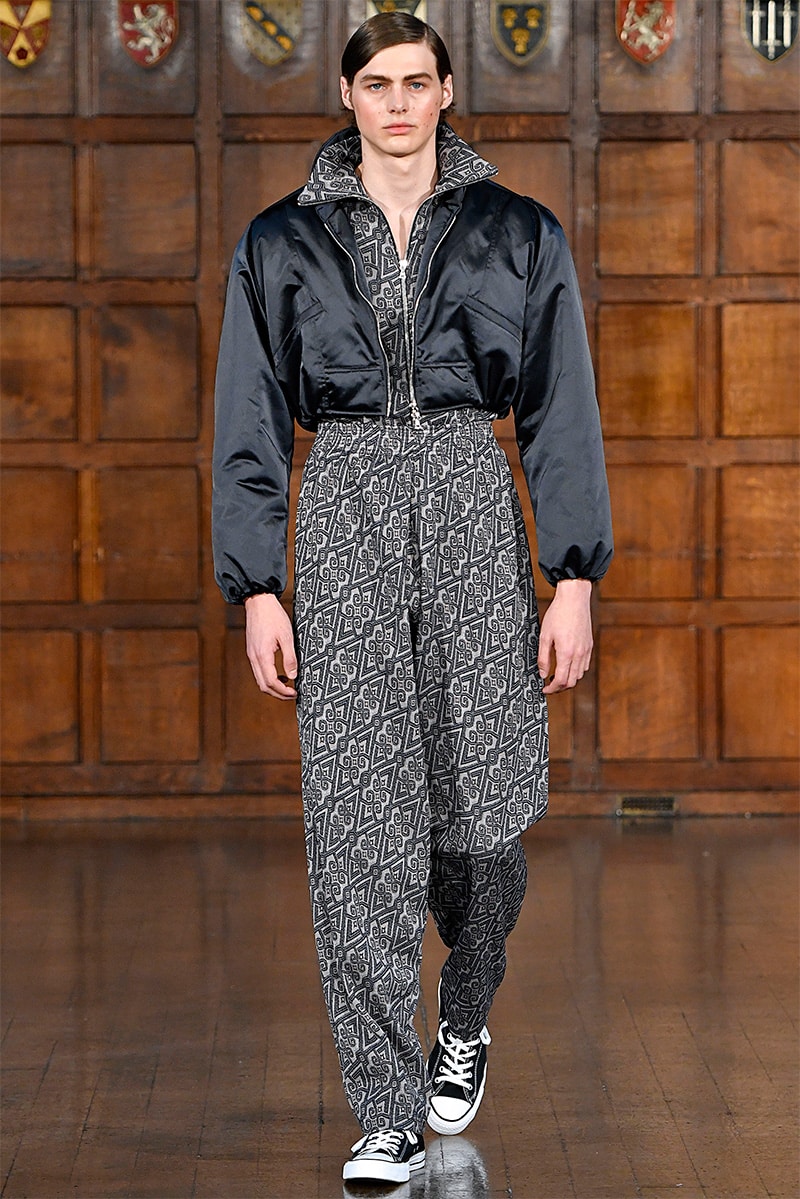
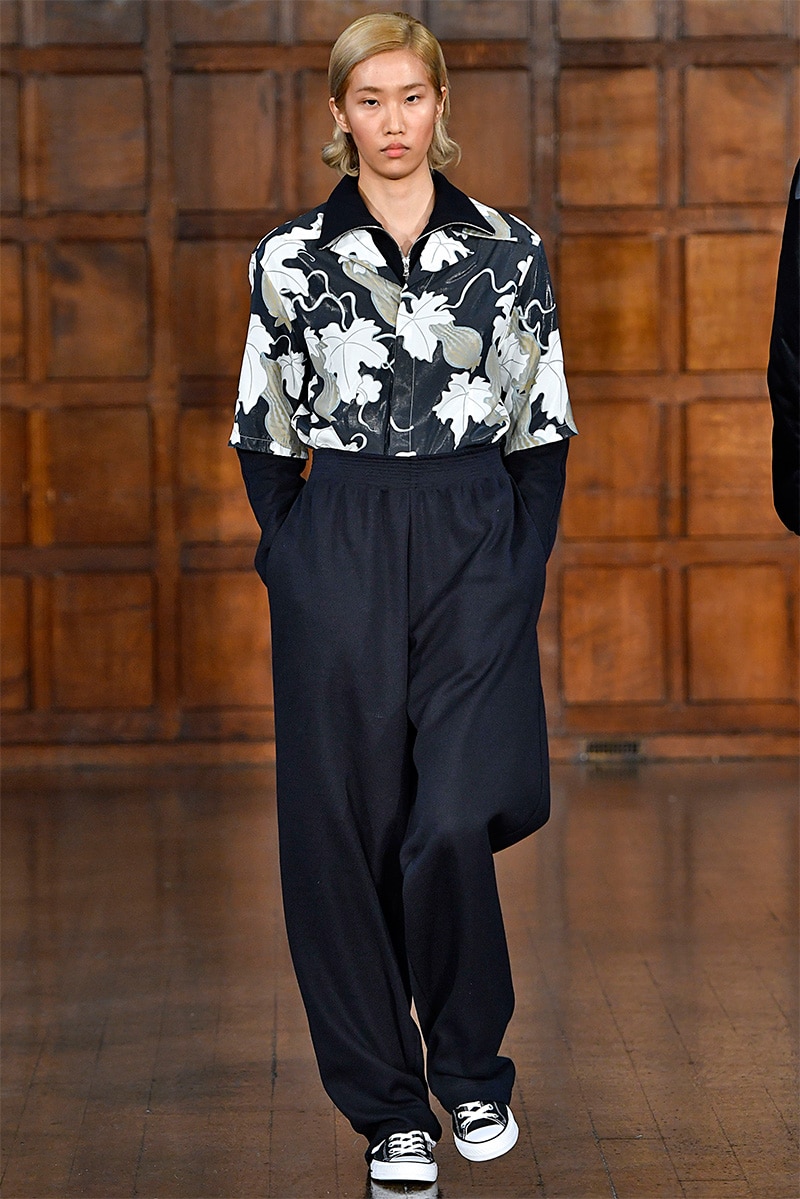
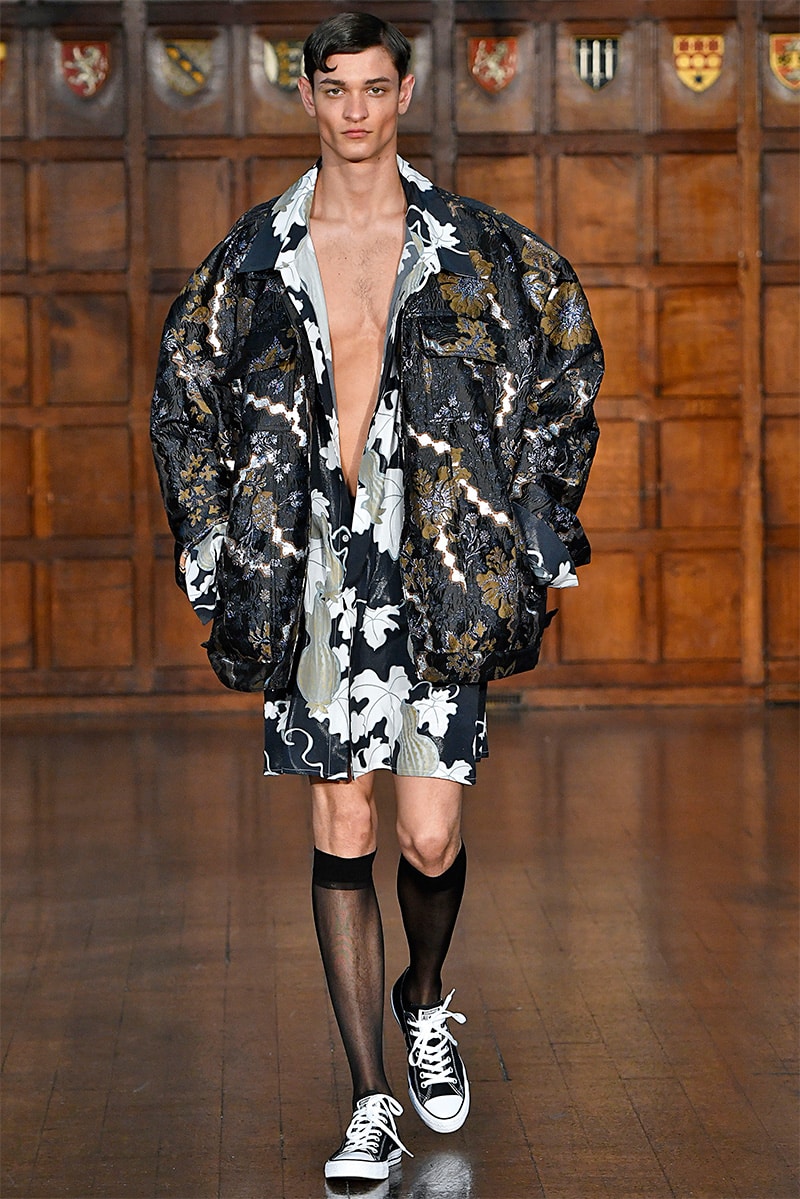
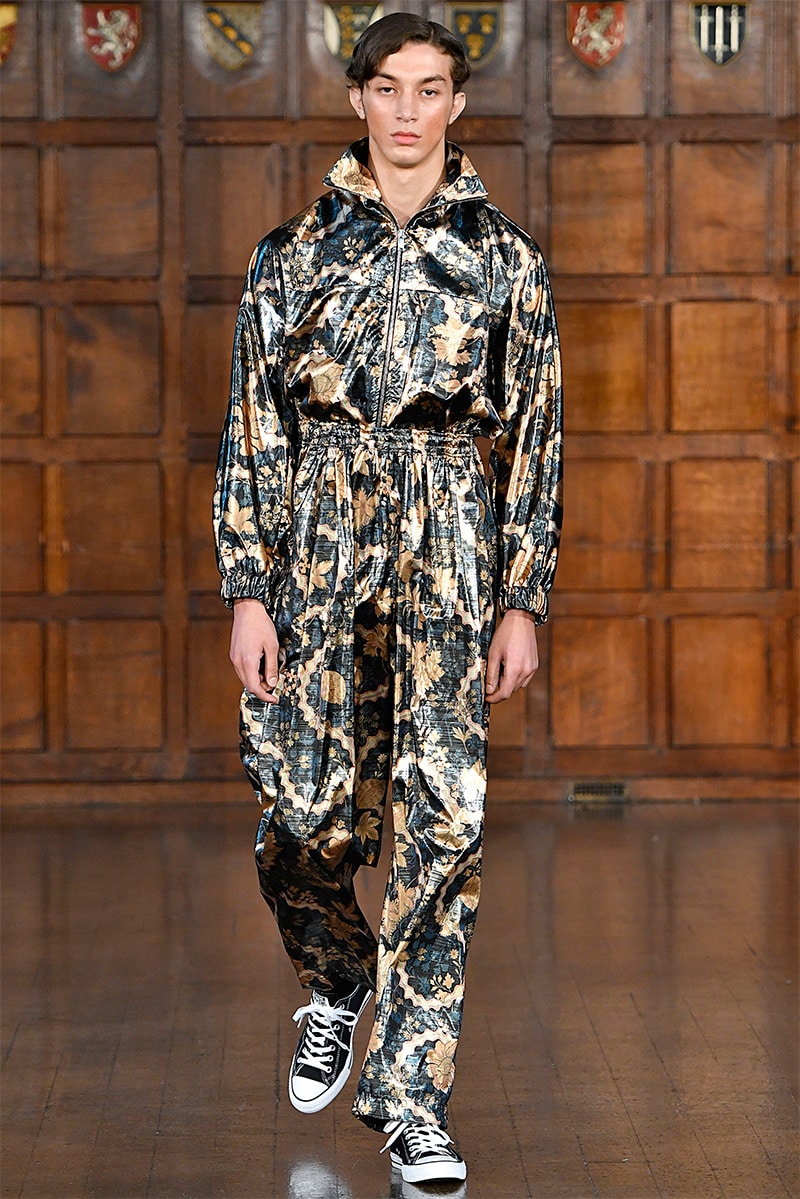
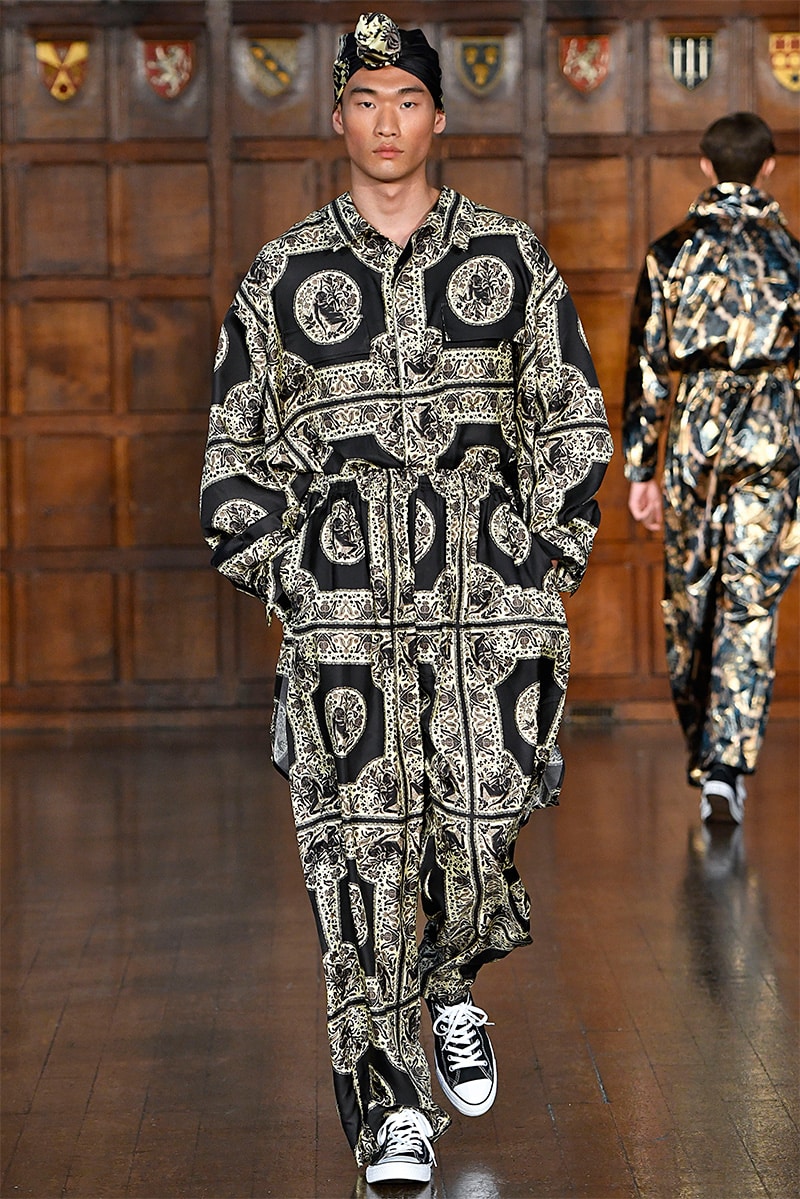
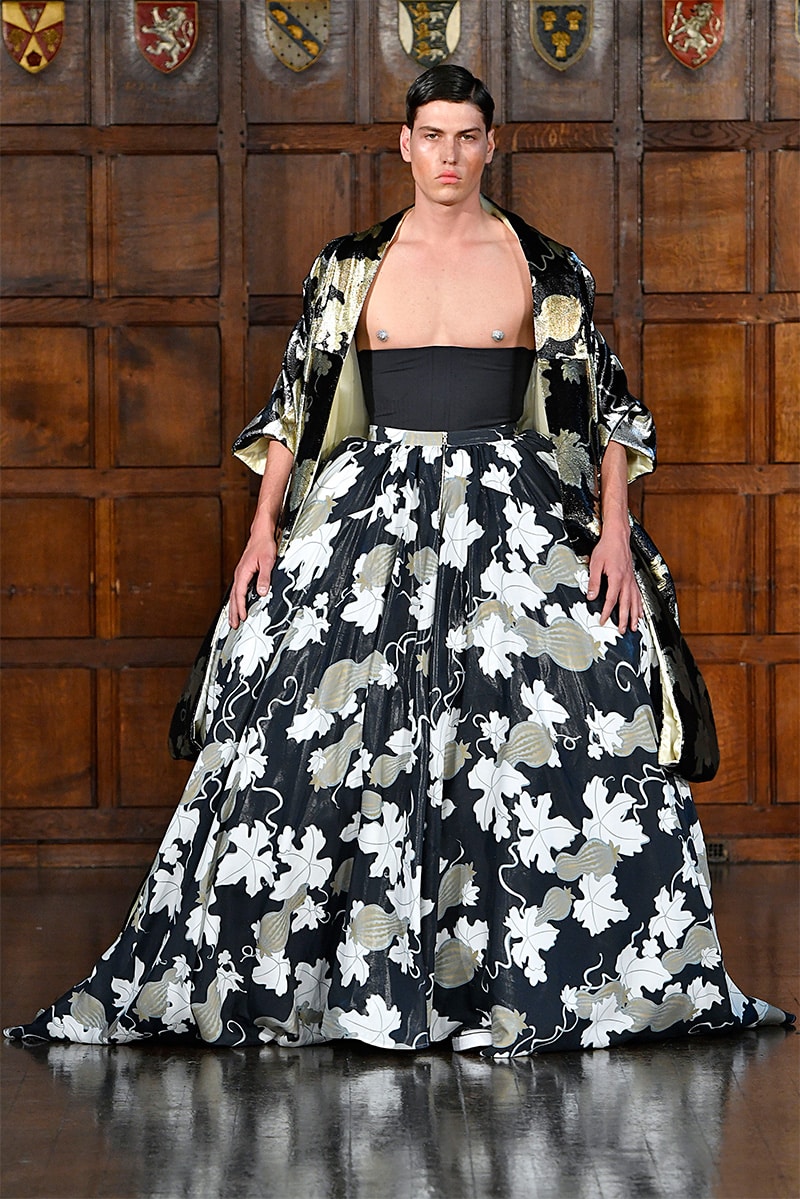
Crystal chandeliers overhead, carved wood panel walls and the steady, watchful gaze of the portraiture subjects hanging on the wall; Edward Crutchley’s Barbican showcase this season felt oh so classic, vaguely nostalgic and yet so intriguingly new and compelling. A study of the historical female form at a first glance, Crutchley uses elements of restrictive female dress to regenerate a new study on the male form instead. Corsets – check, boning, check – male bosom exposé? Why not. The result is an unexpected celebration of male beauty, of which has been derived from the more ostentatious and uncomfortable elements of the classic female wardrobe.
Contemporary use of the pannier; a piece traditionally worn by women around the 18th century to exploit an already tiny and compressed waist – gives hold to a compromise of a soft yet steadfast male form. It does little to restrict in this circumstance, in fact, the very opposite – the drape of the suit jacket compliments the focal point of the bustier and gives the look an overall lightness. It is a refreshing step away from the heavier streetwear ideology that has been surrounding LFWM for several seasons now.
In what felt like a jump into the 20th century circa 1950 to 1980, we are taken through a basic 101 of historical fashion trends: the sharp 70s collars and pussybowblousons, powershoulder suit cuts and form fitting zip up jackets; all complimented via a steady flow of colourchange and texture.
A soft, easy-to-palette start with the nude corsetry gradually drops into a darker, metallic aesthetic. Edward Crutchley’s sensitive interpretation of historical fashion milestones has repurposed and reevaluated what we deem as fitting or functioning – the classic corset may be tainted with rules of constriction for the women of yesteryear but perhaps the 21st century man can find a new fashion freedom amongst the bones of a bustier.
BIBI CHEMNITZ x KROM
Xander Zhou SS18 Backstage!
We talked with Ziggy Chen to learn more about the thinking behind PRITRIKE, his process and his relationship with materials.
Take a look at C.R.E.O.L.E’s Spring/Summer 2026 backstage, captured by the lens of Spencer Stovell during Paris Fashion Week, in exclusive for Fucking Young!
Glenn Martens’ Maison Margiela Artisanal collection doesn’t just borrow from history, but it fractures it, reassembles it, and wears it like a second skin.
This weekend, Eastpak reminded us that backpacks aren’t just carriers of belongings – they’re carriers of stories, creativity, and identity
For Spring/Summer 2026, A. A. Spectrum finds inspiration in quiet moments, the natural ease of creativity, and the unforced beauty of renewal.
For Spring/Summer 2026, AV Vattev’s Bohème collection takes its cues from two iconic worlds: the effortless cool of French New Wave cinema and the raw energy of British music subcultures.
Concrete Husband talks about turning psychological collapse into industrial soundscapes, confronting darkness on Berghain’s dancefloor, and why dark techno is, above all, sexy.
Maciej Poplonyk photographed by Arthur Iskandarov and styled by Egor Telenchenko, in exclusive for Fucking Young! Online.
Titled “YOU DO NOT BELONG HERE,” the visuals strip away ambiguity, trading fantasy for sharp, cinematic storytelling.
We met Yoon Ambush – Co-founder and Creative Director of AMBUSH – in Paris during Men’s Fashion Week.
Les Benjamins has turned its attention to the tennis court with a new collection that mixes sport and style.
GUESS JEANS has officially arrived in Tokyo, opening its first Asian flagship store in the heart of the city’s fashion district.
WHOLE is a pilgrimage for the global queer community, a temporary world where joy, radical acceptance, and self-expression reign supreme.
Alexis Otero captured by the lens of Lucas Lei, in exclusive for Fucking Young! Online.
Levi’s® is celebrating Oasis’ long-awaited reunion with a new collection that combines the band’s iconic style with classic denim.
There’s no bitterness in the heartbreak here, just the sense that longing isn’t defeat, but proof you’re alive.
We had the chance to catch up with Ohio-born, Brooklyn-based designer Kody Phillips in his Paris Fashion Week showroom where he unveiled his Spring/Summer 2026 collection.
Dean and Dan doubled down on their love of fashion’s most dramatic moments, remixing 80s power dressing, 90s grunge, and 2000s excess into something entirely their own.
Gerrit Jacob’s latest collection, GAME OVER, isn’t about surviving the wild but about surviving the grind.
Telekom Electronic Beats (TEB) and 032c are turning 25, and they’re celebrating with a capsule collection and an installation by Harry Nuriev. Titled All is Sound.
Cult Korean menswear brand THUG CLUB teamed up with designer IZZY DU for an unforgettable dinner and afterparty at the mythical Lapérouse during Paris Fashion Week.
Jonathan Anderson has always treated fashion like a carefully assembled collection, mixing the unexpected, trusting his instincts, and binding it all together with a strong point of view.
The Palau Reial de Pedralbes provided the perfect backdrop as IED Barcelona unveiled its 21st Fashioners of the World showcase.
This season, Camper unveils its first collaboration with ISSEY MIYAKE’s Peu Form, designed by Satoshi Kondo.
A collection that exudes freshness, confidence, and a desire to write a new page in the history of the Maison.
“Poison Ivy” tells the story of a transfer student’s dangerous fixation with his school’s golden boy.
Aitor Santomé’s AHOY Diary on Board is a glitter-drenched, holographic love letter to queer joy, fashion, and the magic of the open sea.
Louis Vuitton has introduced its latest Silver Lockit 2025 collection, developed in partnership with Felix, the brand’s Ambassador and UNICEF Goodwill Ambassador for Korea.
The Salomon XT-6 wasn’t made for sidewalks. Born for punishing mountain trails and ultra-distance races, its technical DNA speaks to wilderness endurance.
Stéphane Ashpool has opened Souvenir Pigalle at 17 Rue Duperré, a place built on his memories of growing up in Pigalle.




















